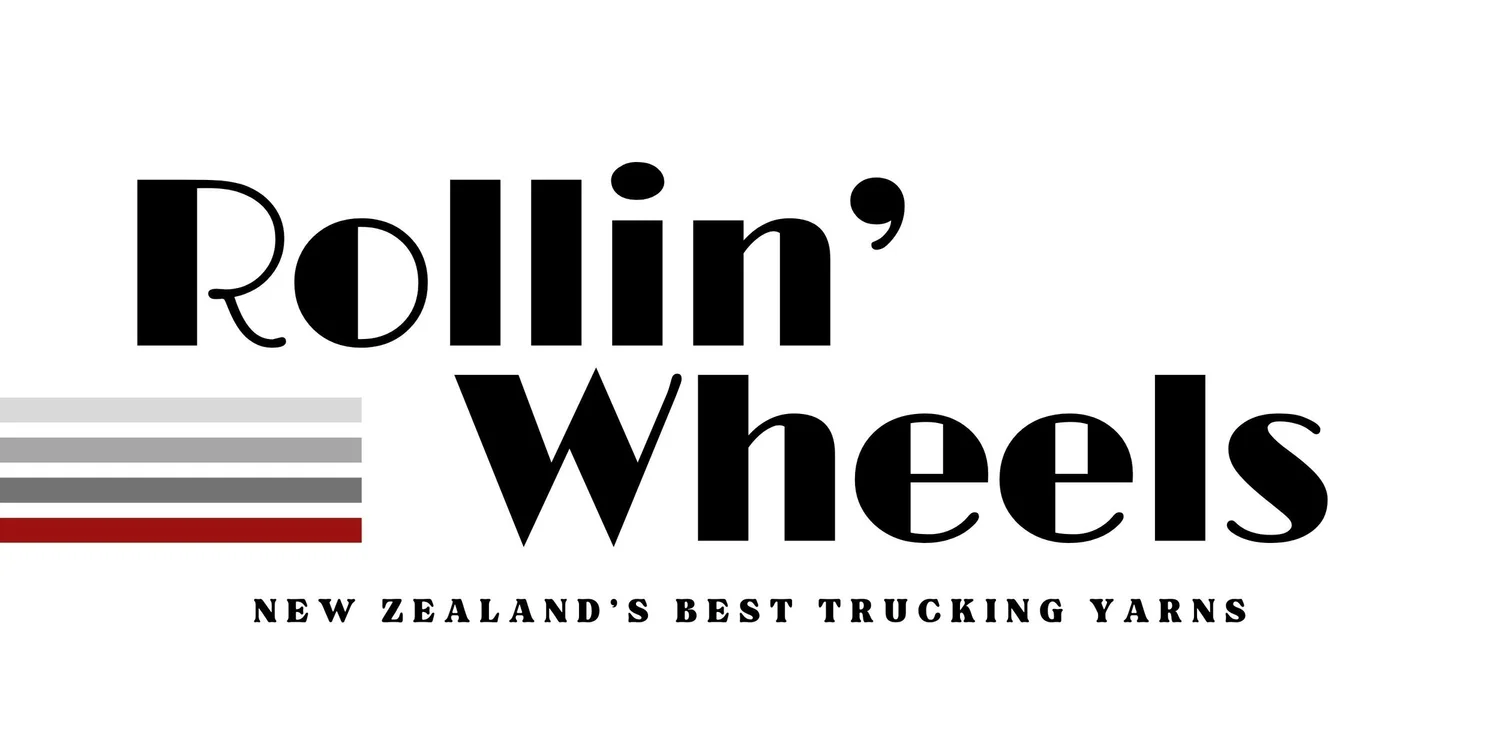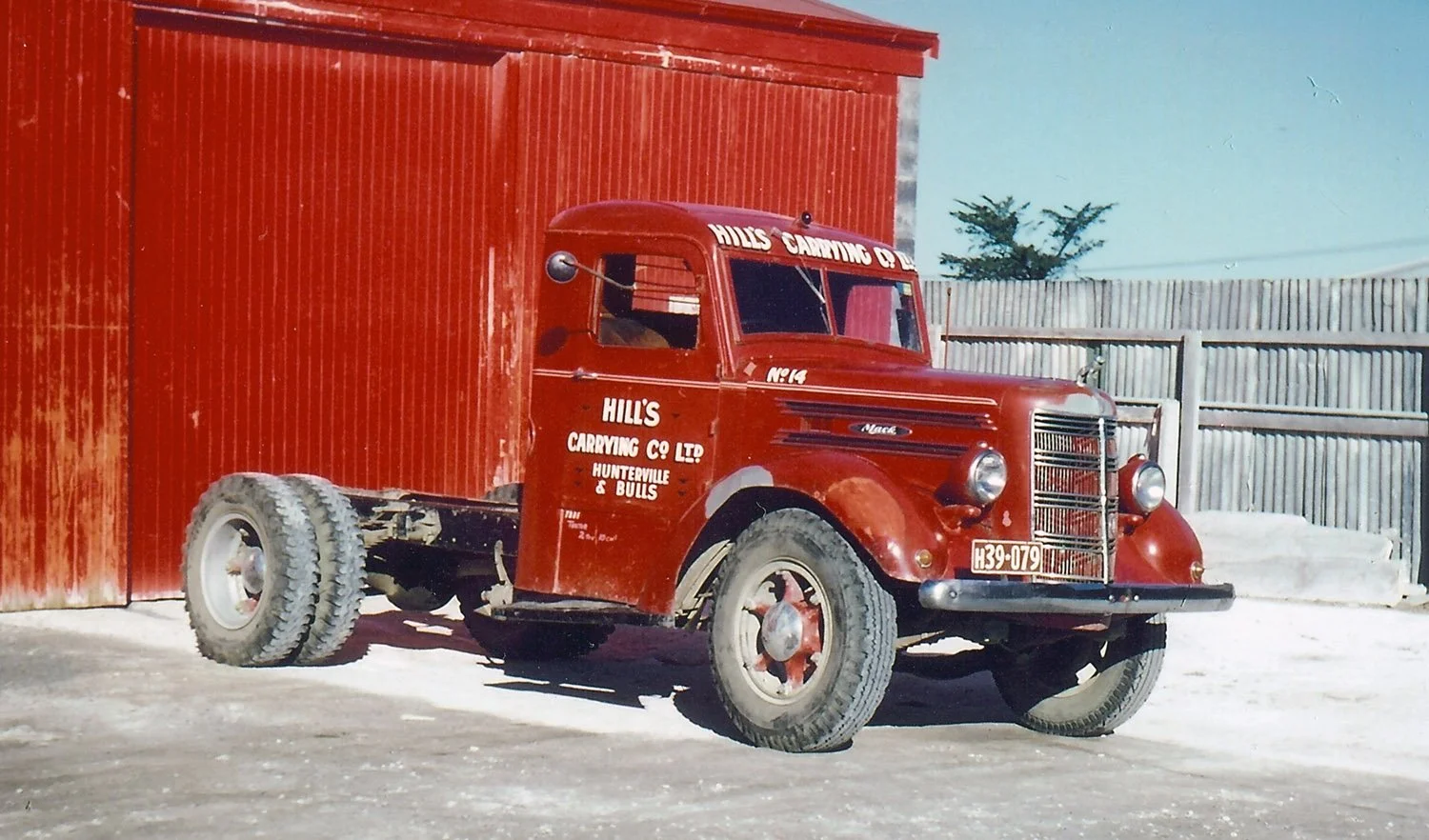Hills Carrying Company of Bulls and Hunterville
Part 2
First published March 2009
by Noel Hill and David Lowe
William Thomas Hill started carting road metal around Feilding with a horse and cart in the latter part of the nineteenth century. From Feilding he moved to Palmerston North and then on to Bulls where he had obtained a contract to load and cart metal from the Rangitikei River to the Sanson Tramway. From these beginnings there grew a substantial carrying company based in Bulls and with a branch at Hunterville. We continue the story stepping back to the fifties and following it through to it’s conclusion in the 1980s.
In the summer in the early 1950s during the peak of the fat lamb season Hill’s Morris Commercial had unloaded at Greatford rail and was headed back to Bulls for another load when over the Greatford overbridge came a Riley 9 that had no show of stopping. It hit the Morris in the cab and wrote off both vehicles. Bob Hill rang Anderson Motors in Wanganui from where the firm had been purchasing the Bedford trucks that were prominent in the fleet and said that he needed a truck urgently, not necessarily a new one but a truck of some sort. The salesman laughed at him – there were no trucks.


After a phone call to Jolly & Mills in Palmerston North the firm took delivery of what was to be the first many Commers, a 5 ton Superpoise powered by the same 6 cylinder side valve engine that was used in the Humber Super Snipe car, the only truck to be pressed into service without being painted in the firm’s distinctive red livery. It was dark green and stayed that way for a while. That was the start of a business relationship of some thirty years between Hills and Jolly and Mills, with the purchase of some 25 or so Commer trucks and later the Mitsubishis. There was only one more Bedford bought, the first of the 7 tonners or Big Bedfords.
Fertilizer was carted in bulk from Aramoho to various farms where it was reloaded onto one of the first bulk spreaders operated by George Harford (who later, with the Bowens, started the now famous Agrodrome in Rotorua). This proved not to be the complete answer so a bulk store was established, with consignment stock of fertilizer supplied by Kempthorne Prosser, cartage by Hills, spreading by G A Harford, and one account supplied to the farmer in the name of Rangitikei Bulk Spreaders.
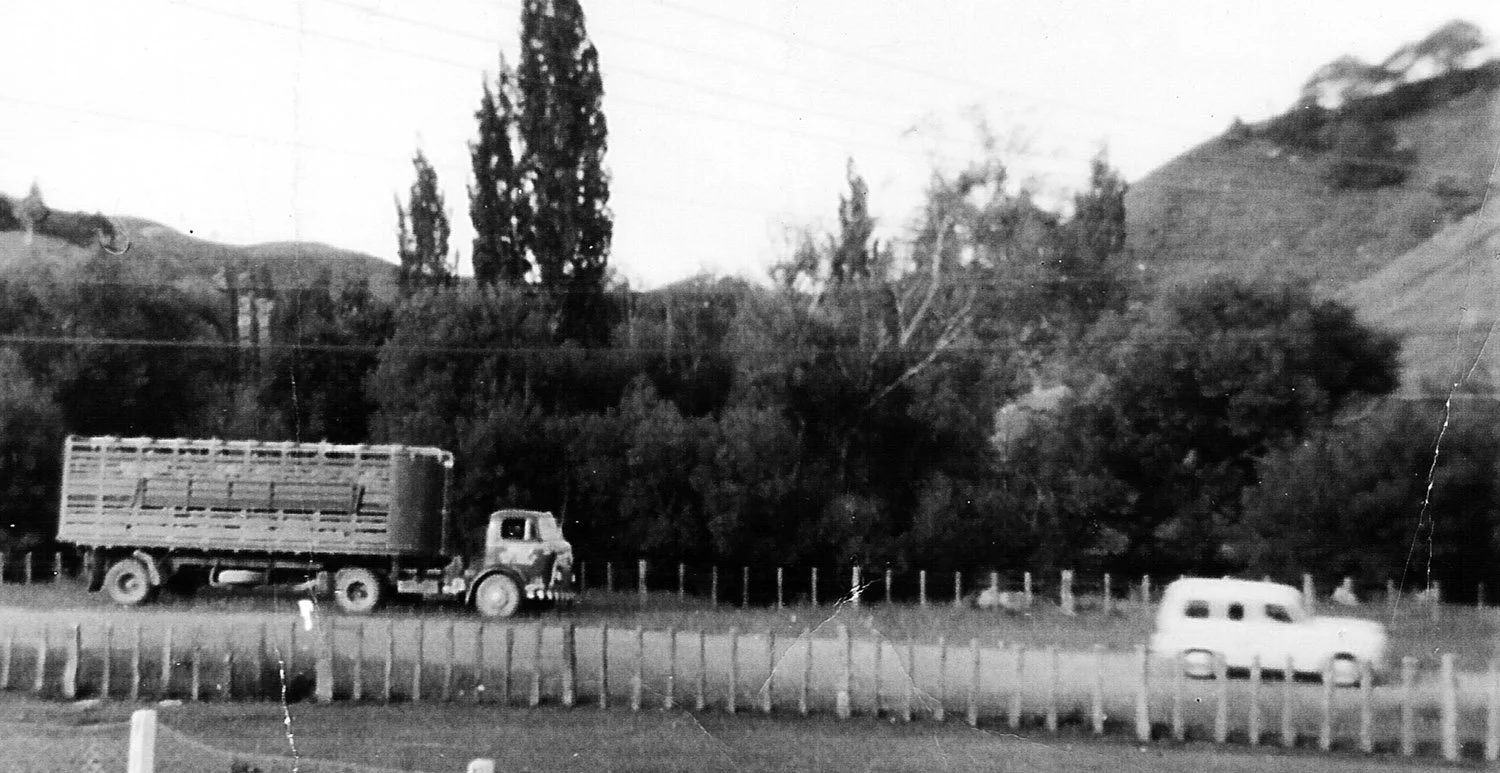

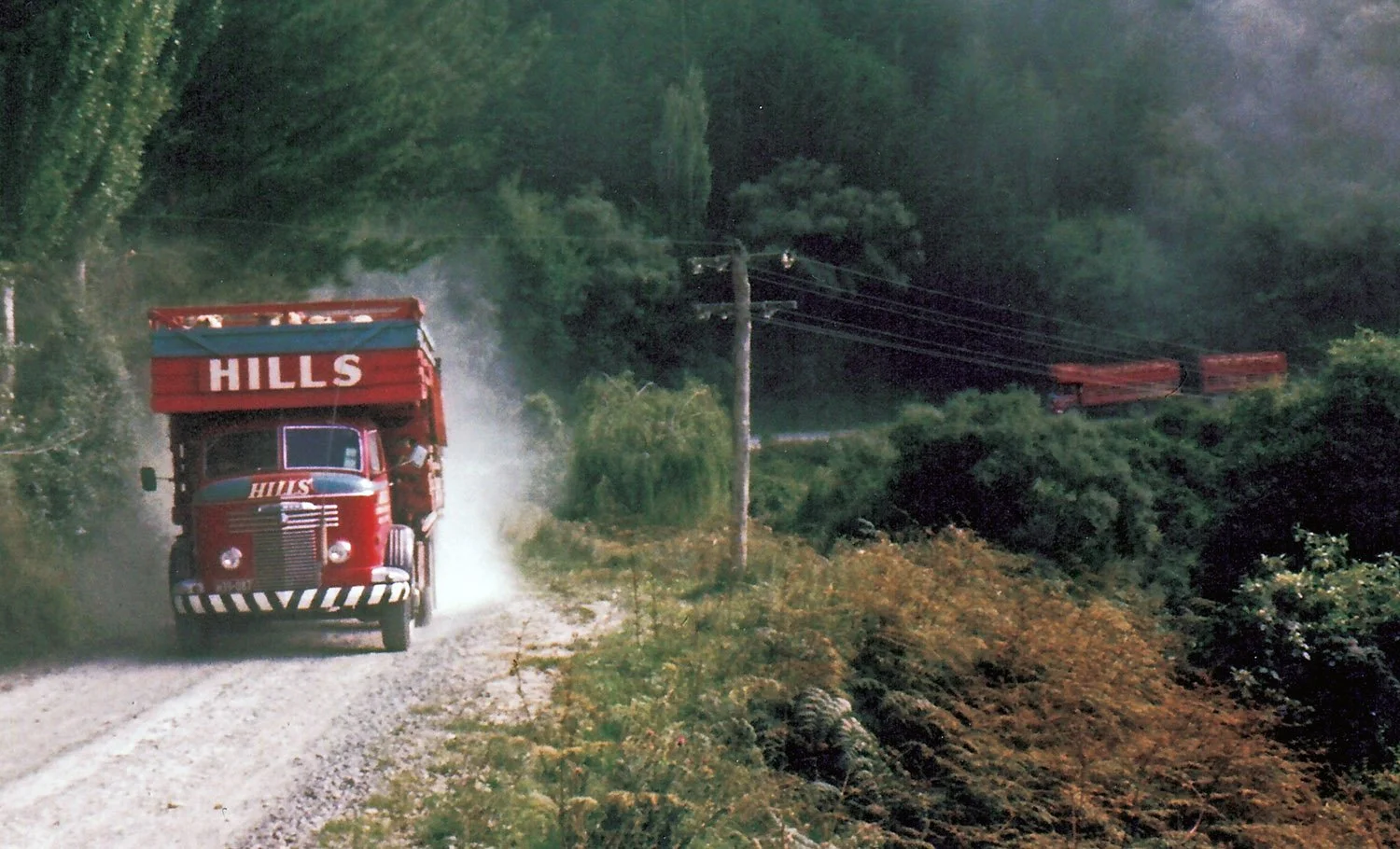
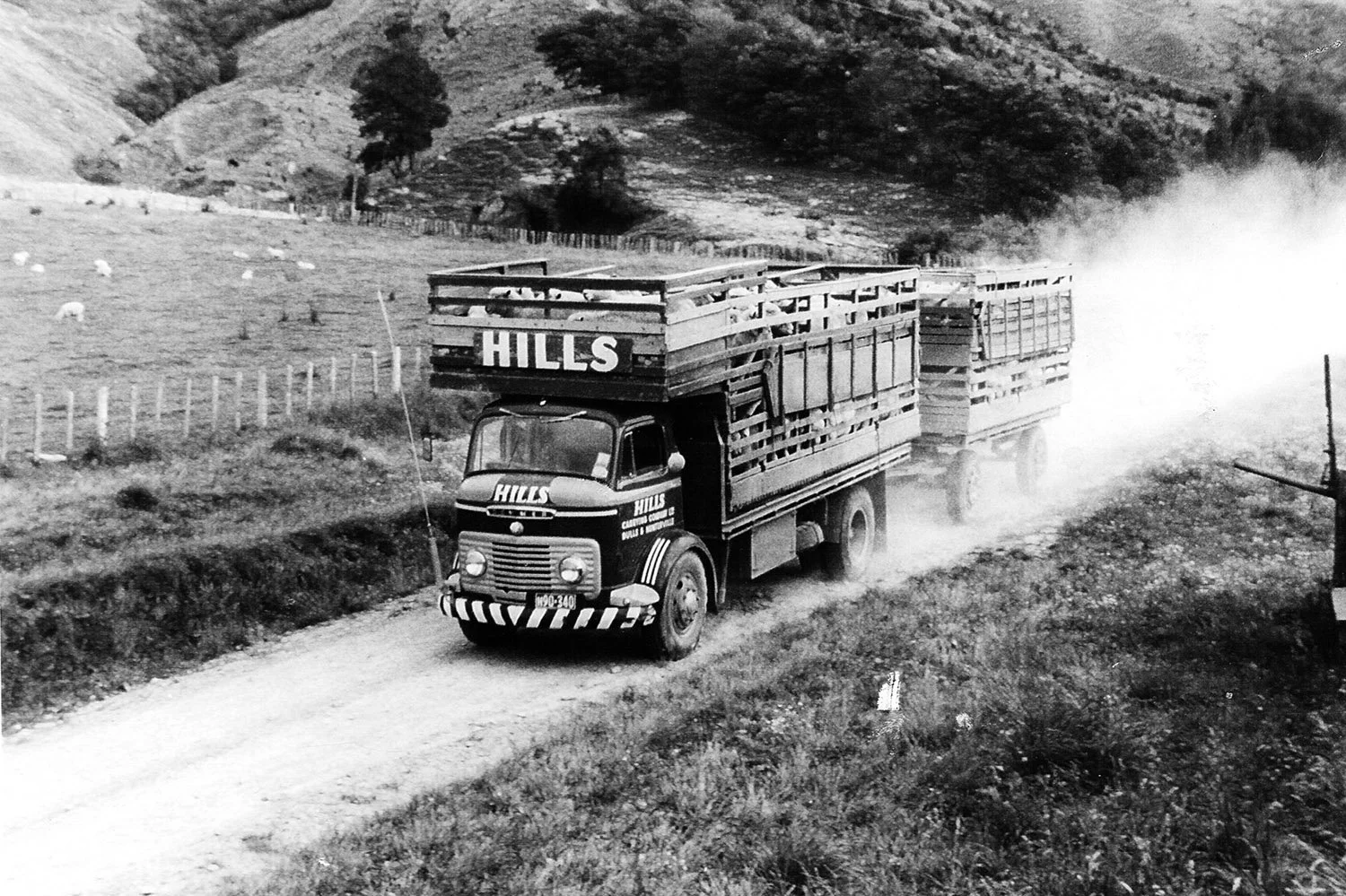
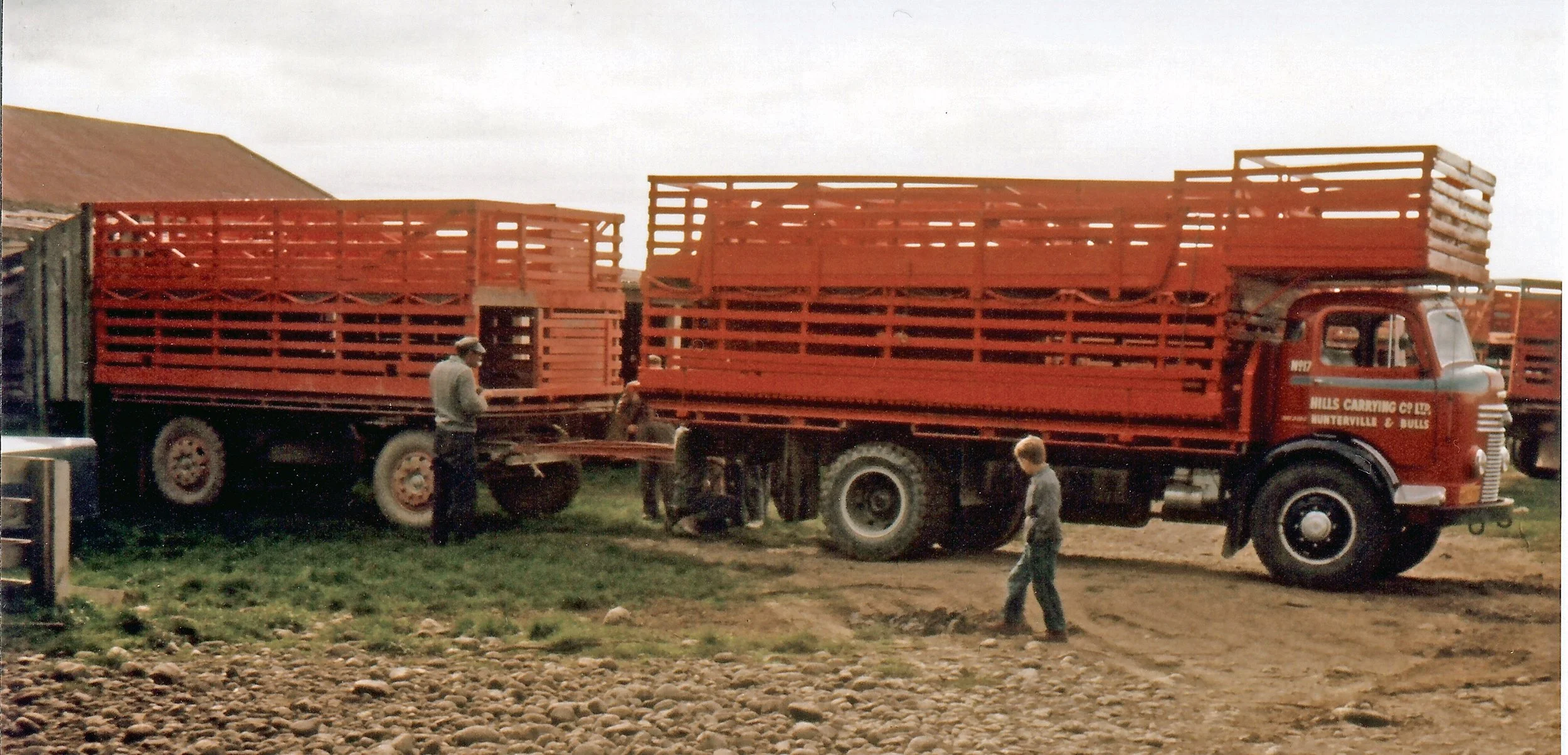
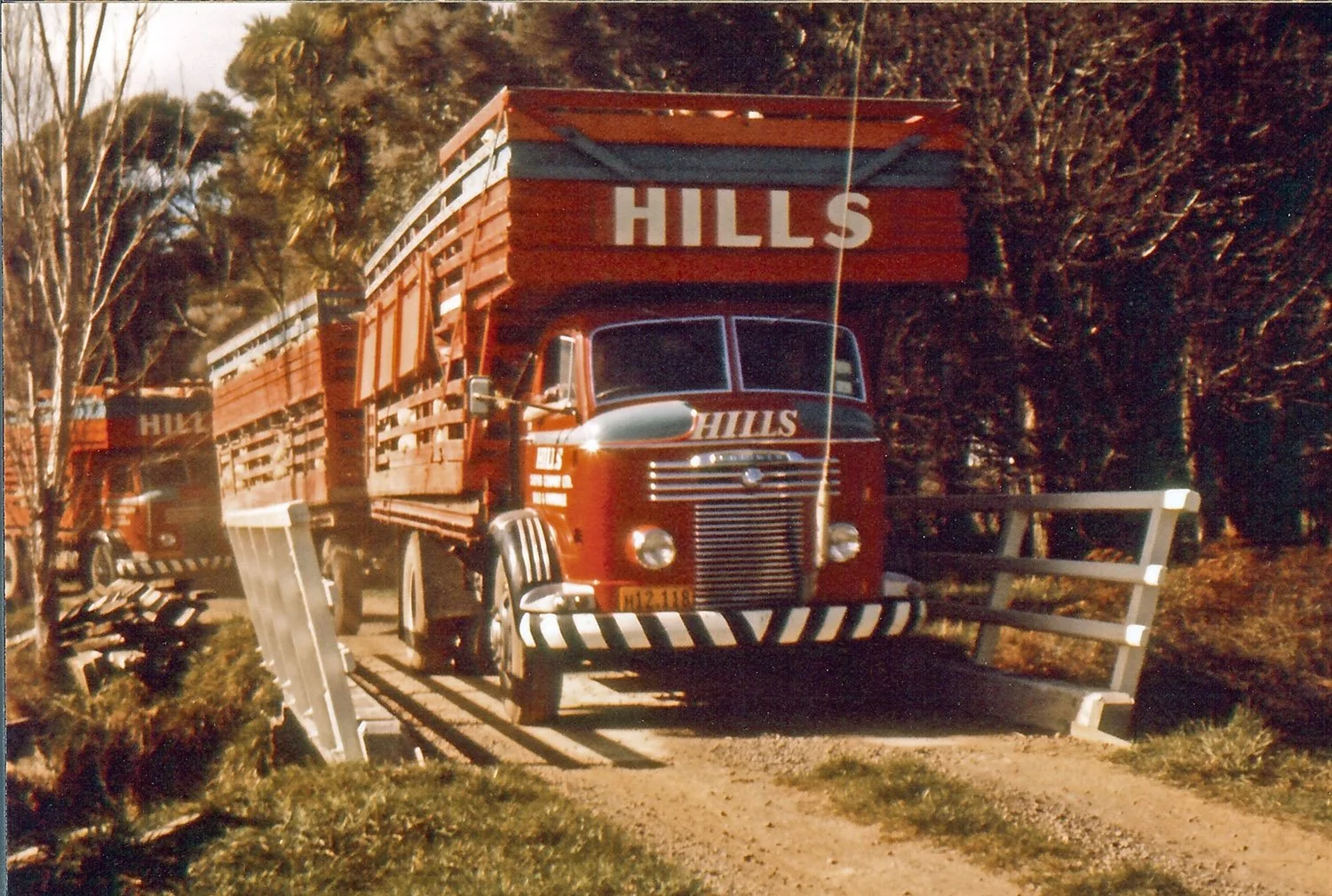
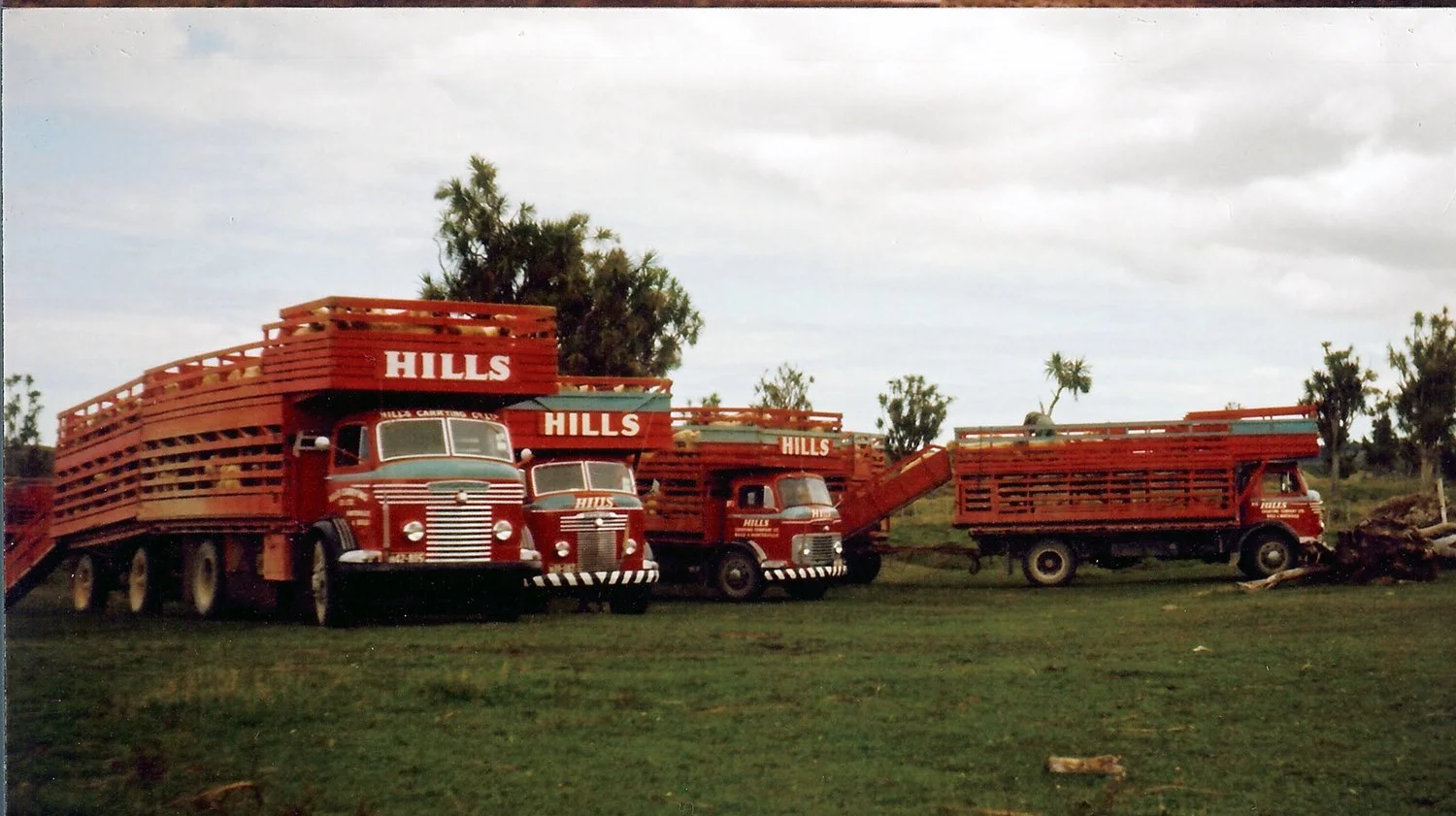
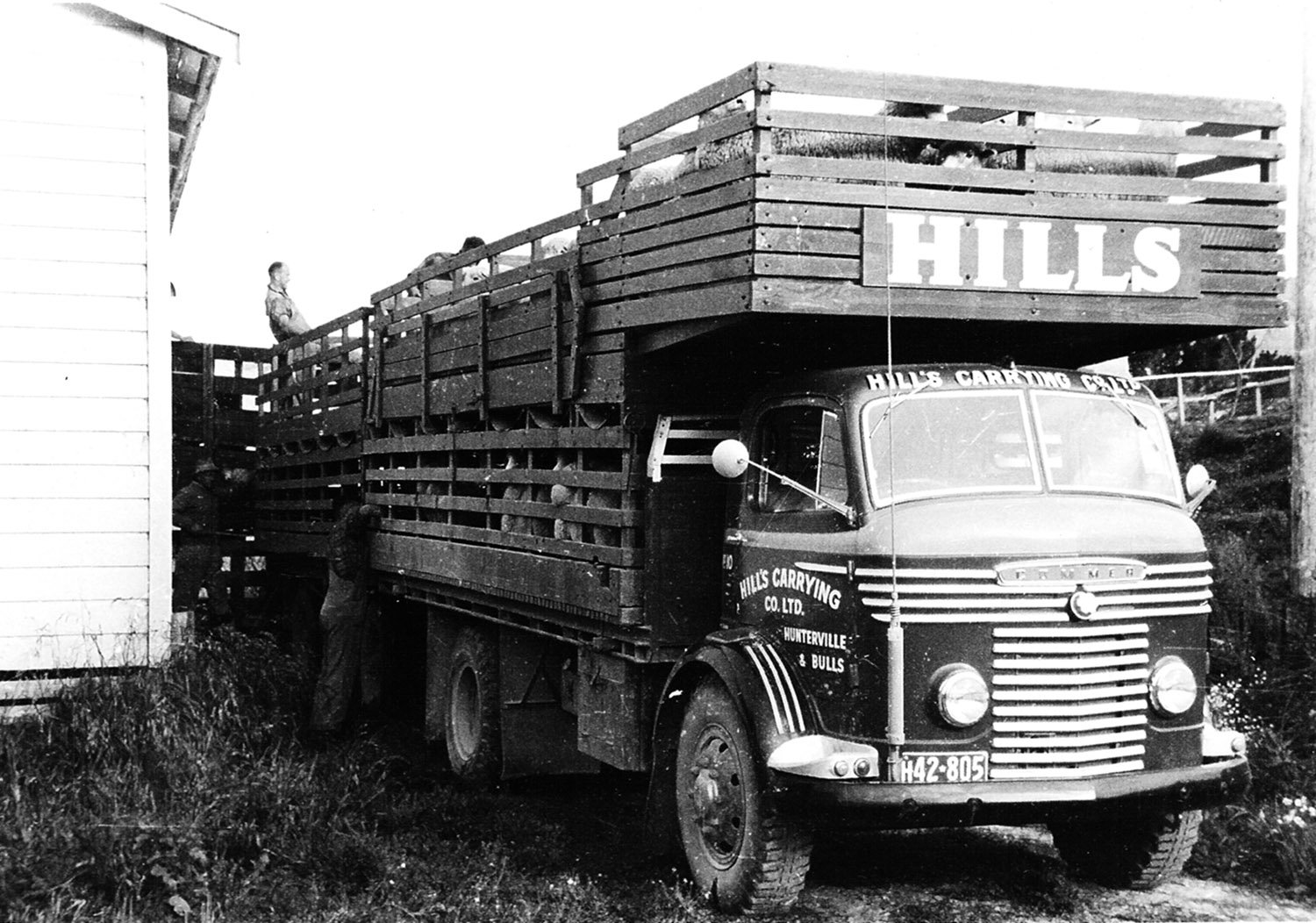
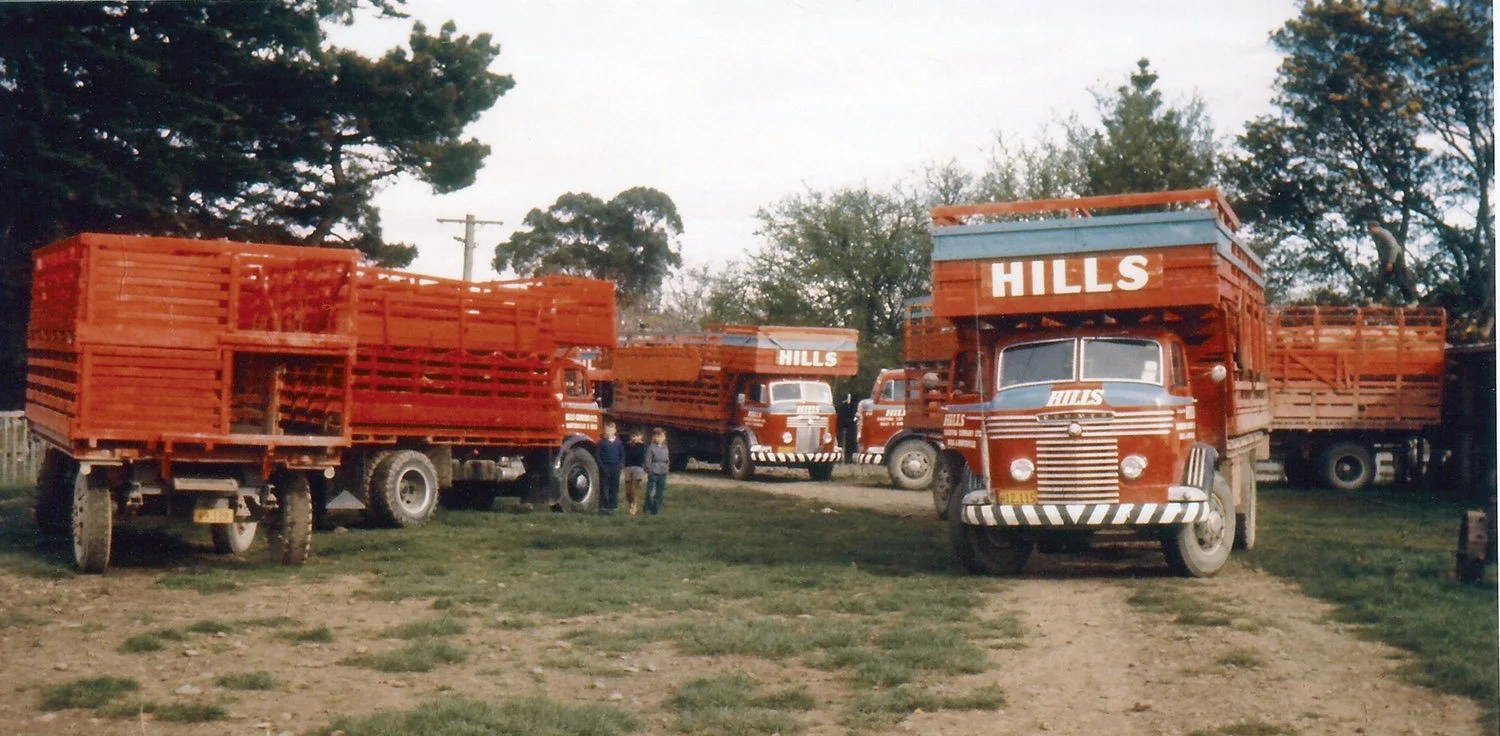
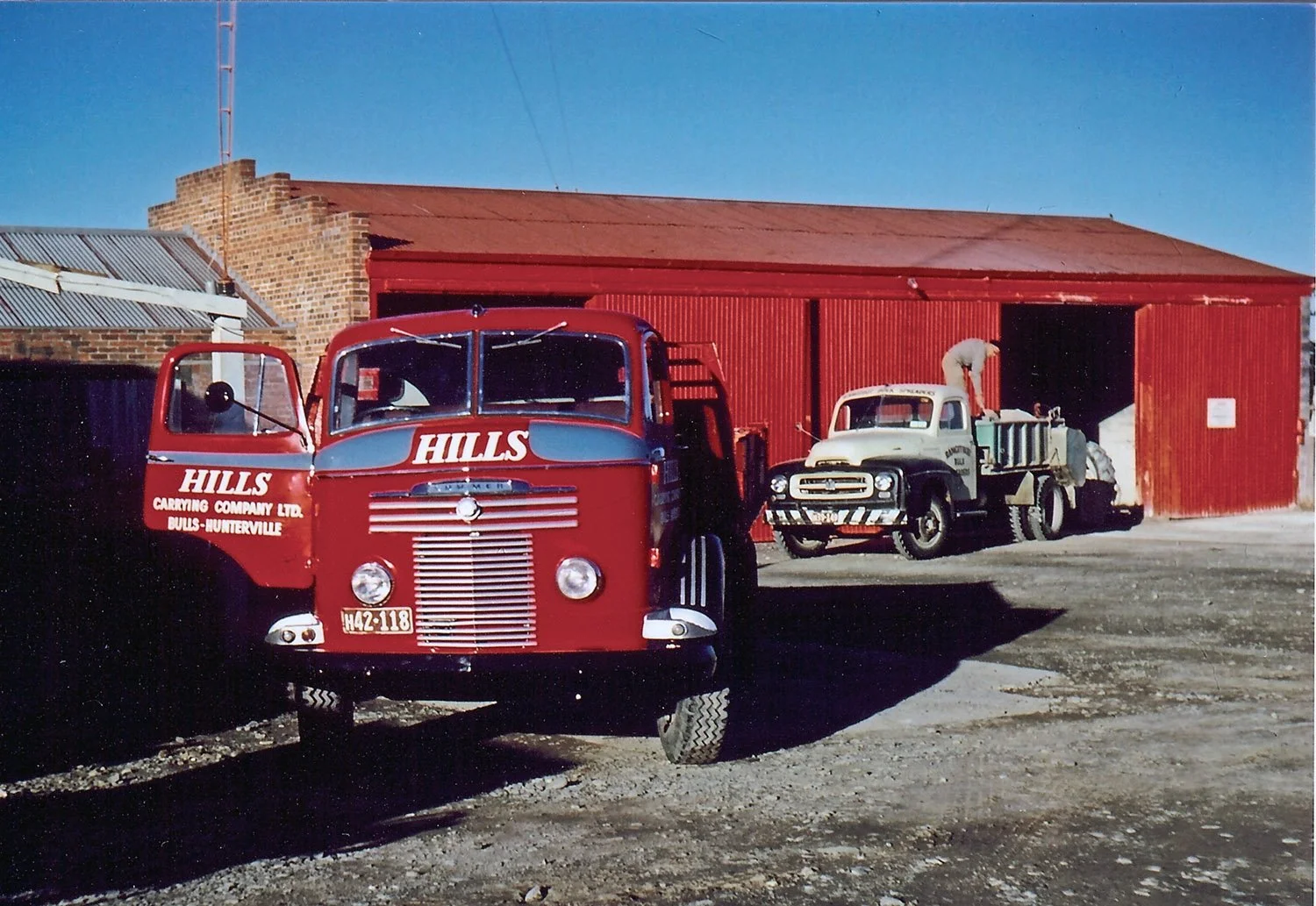
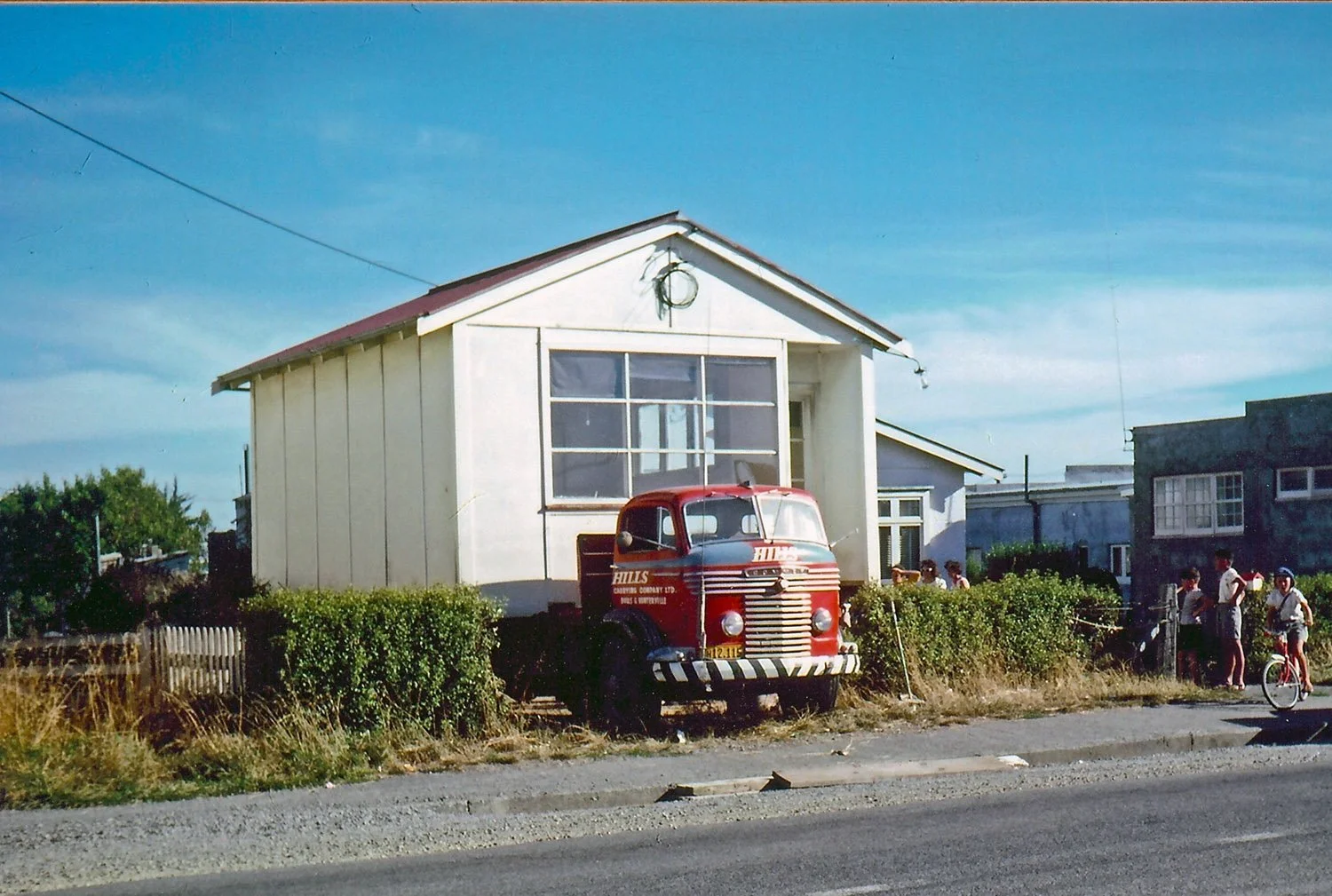

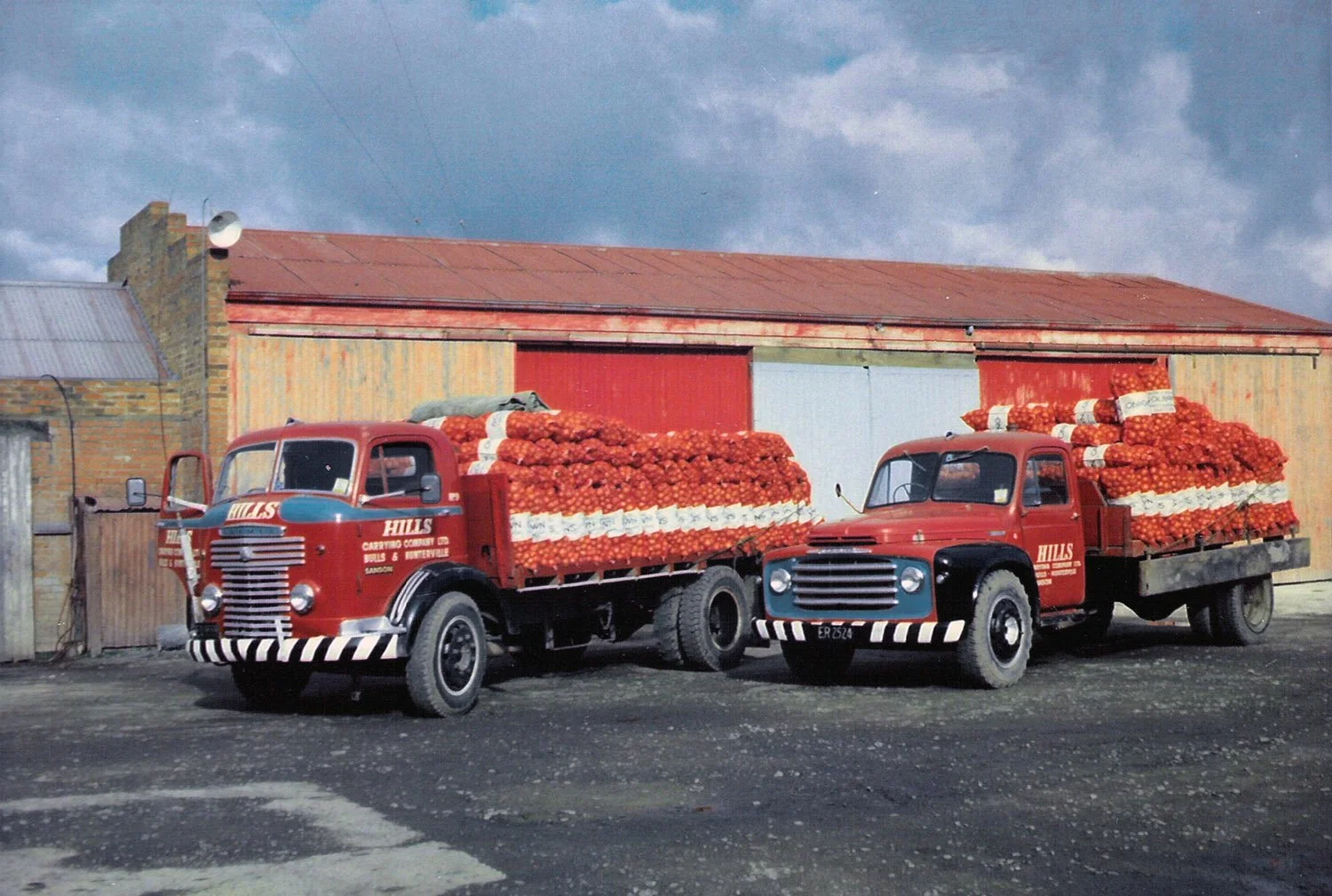
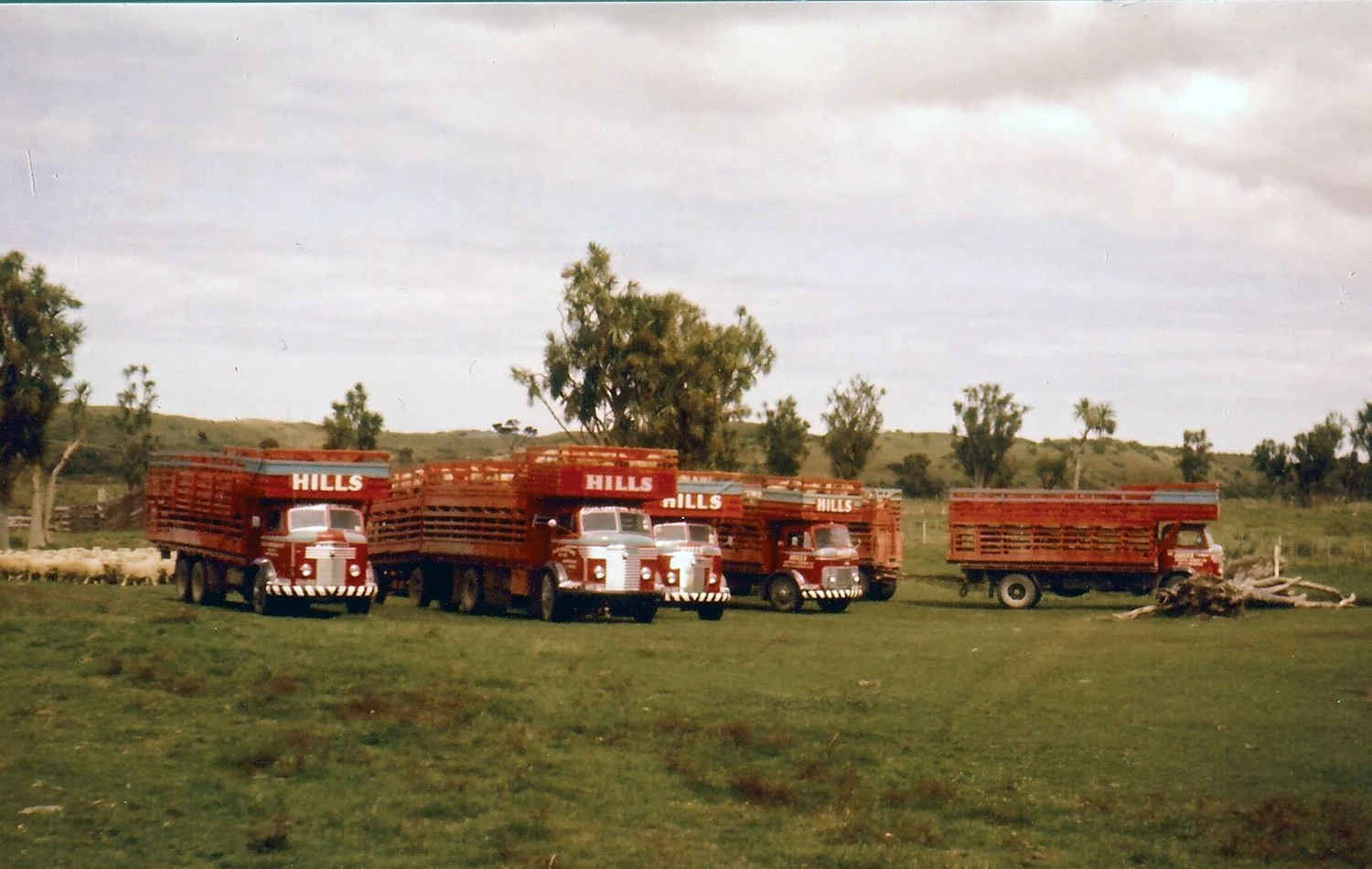

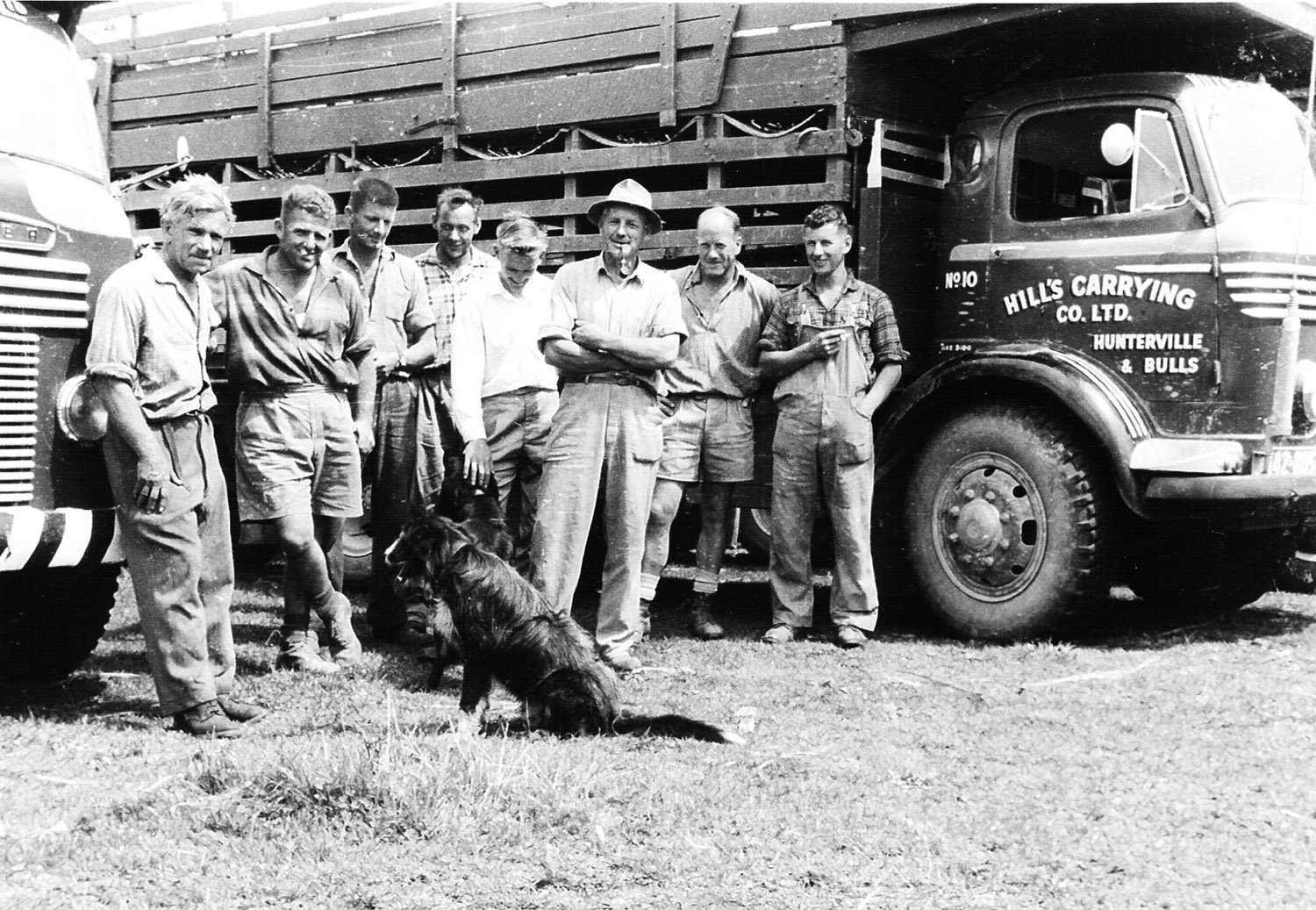
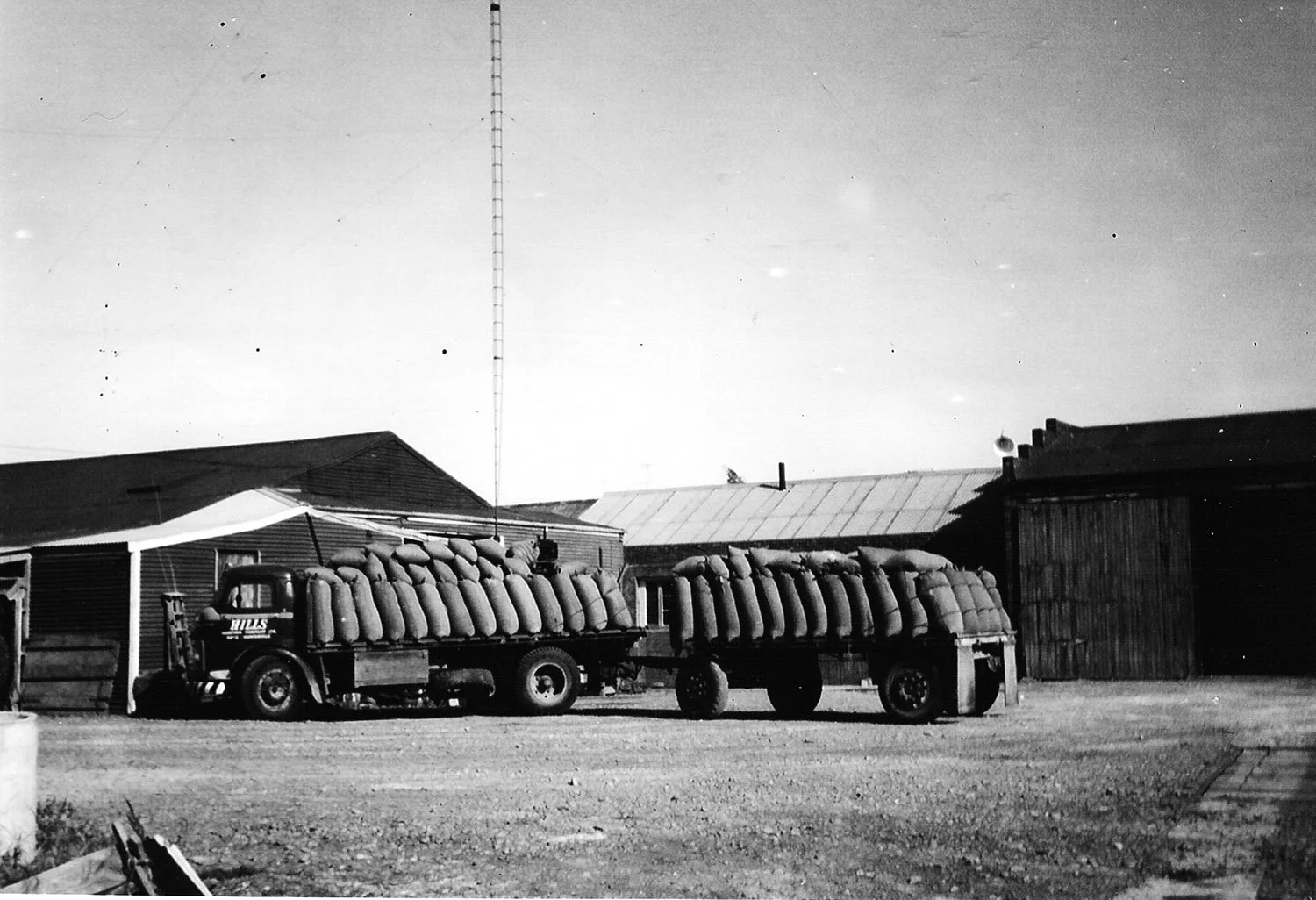
Later George sold to Colin Nagel to go farming and when later still Colin wanted to go farming the Carrying Company purchased the spreading business and formed a separate company, Rangitikei Bulk Spreaders Limited, which was managed very successfully by Alan Zander.
One of the first tipping trailers was purchased from Dometts to cart the bulk fertilizer but it had a single ram front of body hoist operated by a hand pump and was extremely hard work. The driver of the truck was Alan Zander, and he had several ‘meaningful discussions’ with Bob Hill regarding the operation of this unit, however when Dave Domett went to Europe for a look at transport equipment he came back with a valve that allowed the trailer hoist to be operated by the truck hydraulic pump and this solved the problem.
Over the years trucks had got increasingly larger, and also stock crates were changing from the old wooden sheep crates of two decks with an over cab pen or wooden cattle crates to combination crates. The first combination crate was bought from McIntosh Brothers Engineers in Palmerston North for $493 and was used on the artic in Hunterville pulled by the old Mack.
The EH Mack sitting in Hills yard.
The two brothers Bob and Kim were a little conservative and inevitably at a meeting in Bulls talk came around to the need to invest in diesel trucks, or at least one for a start. After some discussion as to whether it would be suitable for Hunterville or Bulls it was suggested that maybe they should purchase two Commer TS3 diesels, one for each branch and this was what happened, both equipped with the new combination crates at a cost of $440 each. These were the first trucks to cost the company over $6000 each, the earlier Commer ‘slopers’ that had been used were costing $4704 cab and chassis.
With the demise of Atlas Freighters in 1971 Hills purchased the assets of the Atlas branch at Bulls, both land and buildings and also all of their vehicles which were quickly painted into the fleet red and incorporated into the Bulls branch that relocated to the Atlas depot. At the time of the Atlas receivership Hills Carrying Company owned twelve vehicle authorities and with the purchase of the Bulls section of Atlas Freighters that rose to twenty nine.
With the demise of Atlas Freighters in 1971 Hills purchased the assets of the Atlas branch at Bulls.
With the relaxation of the licensing regulations livestock was now able to be carted over longer distances than previously so there was much traffic between the Rangitikei and the Gear Meat Co. works at Petone and the Wellington Meat Export works at Ngauranga, as well as the local works of NZ Refrigerating Co at Imlay, CWS at Longburn and Thos. Borthwicks at Aorangi.

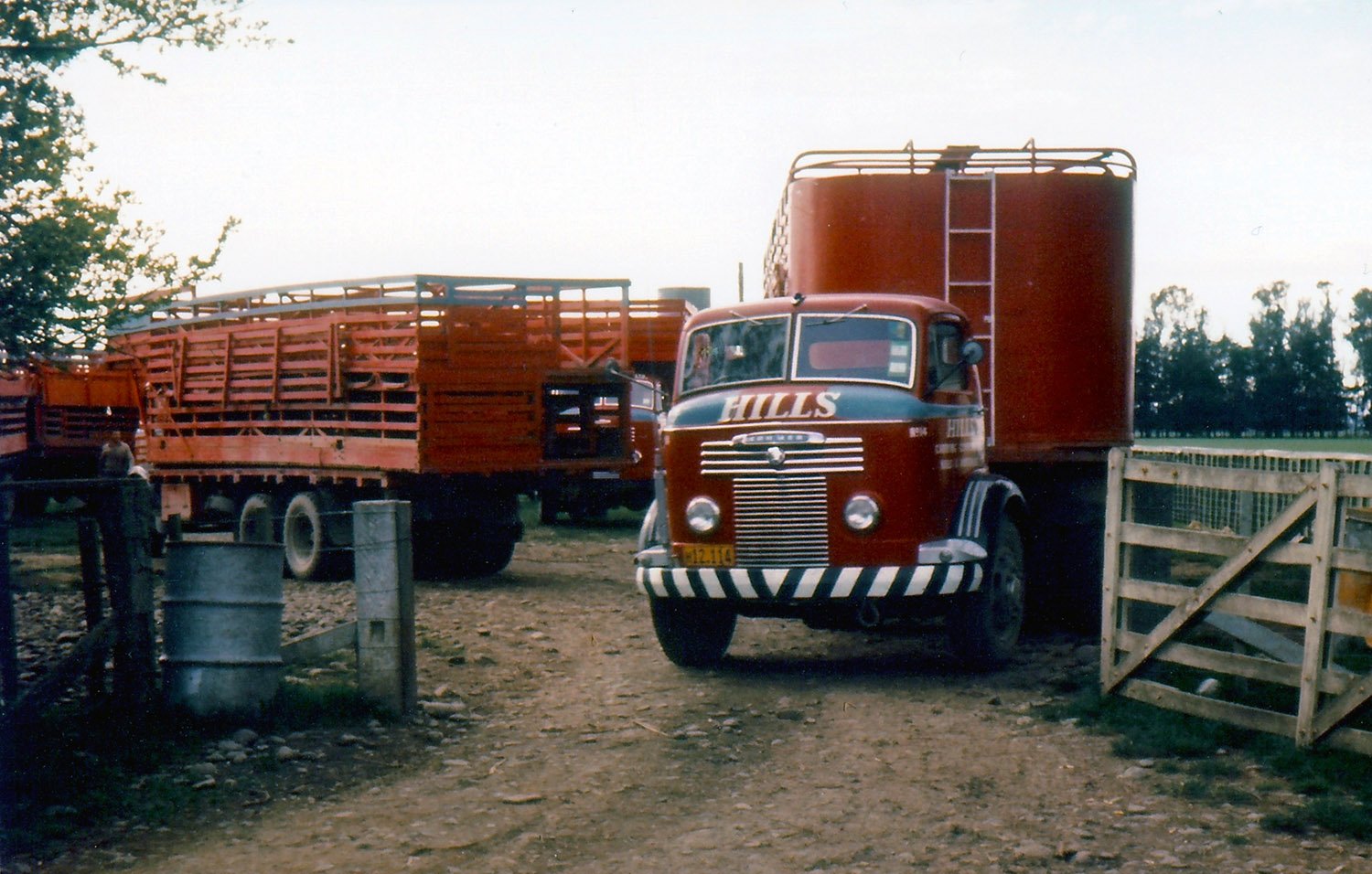
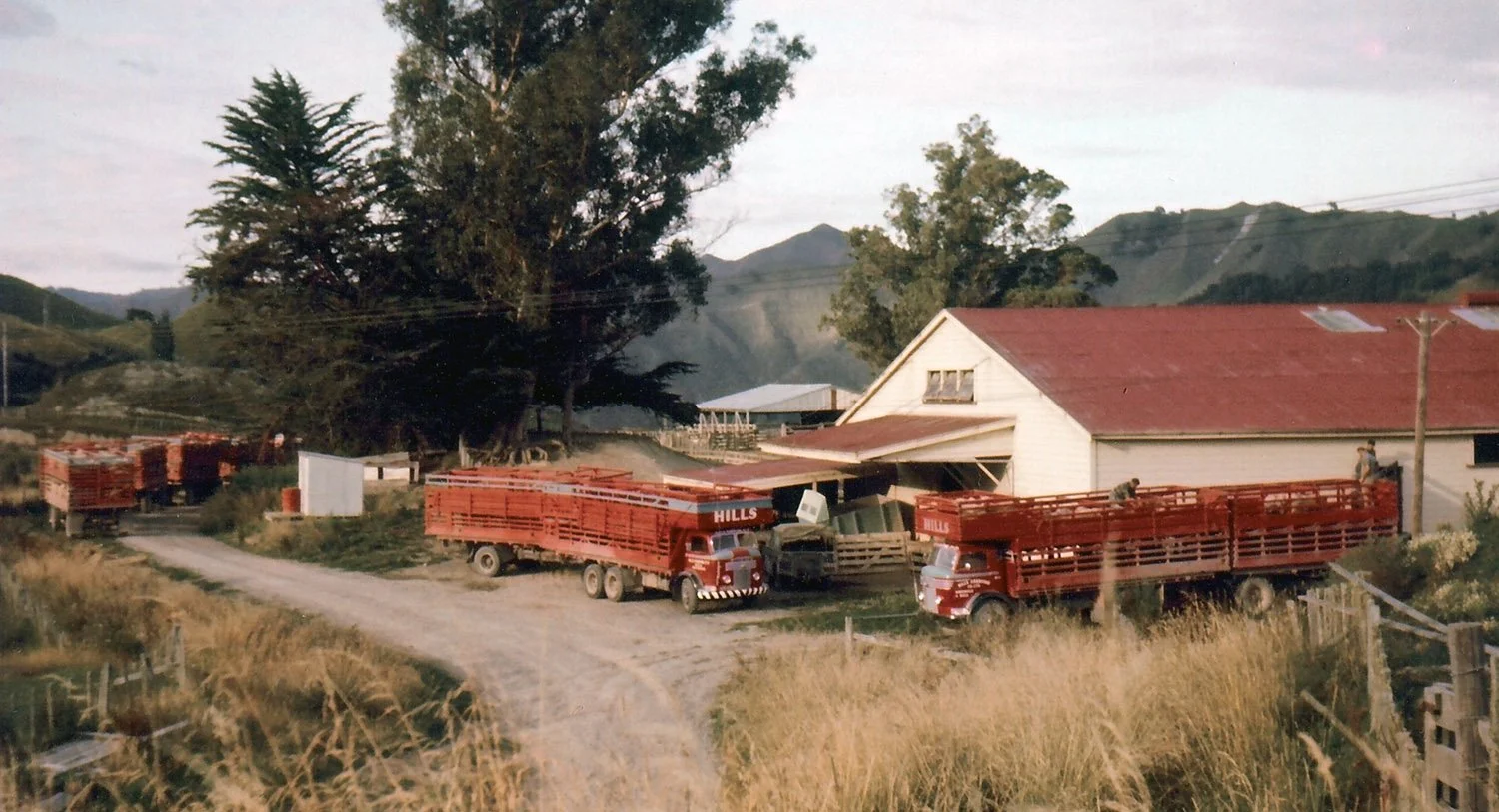
Although the firm had been operating 14ft two axle trailers there was now a need to cart a bigger payload and they moved up to a 20ft trailer built by Dometts of Feilding, the first trailer on dual wheels and towed by a Commer diesel with a trailing axle.
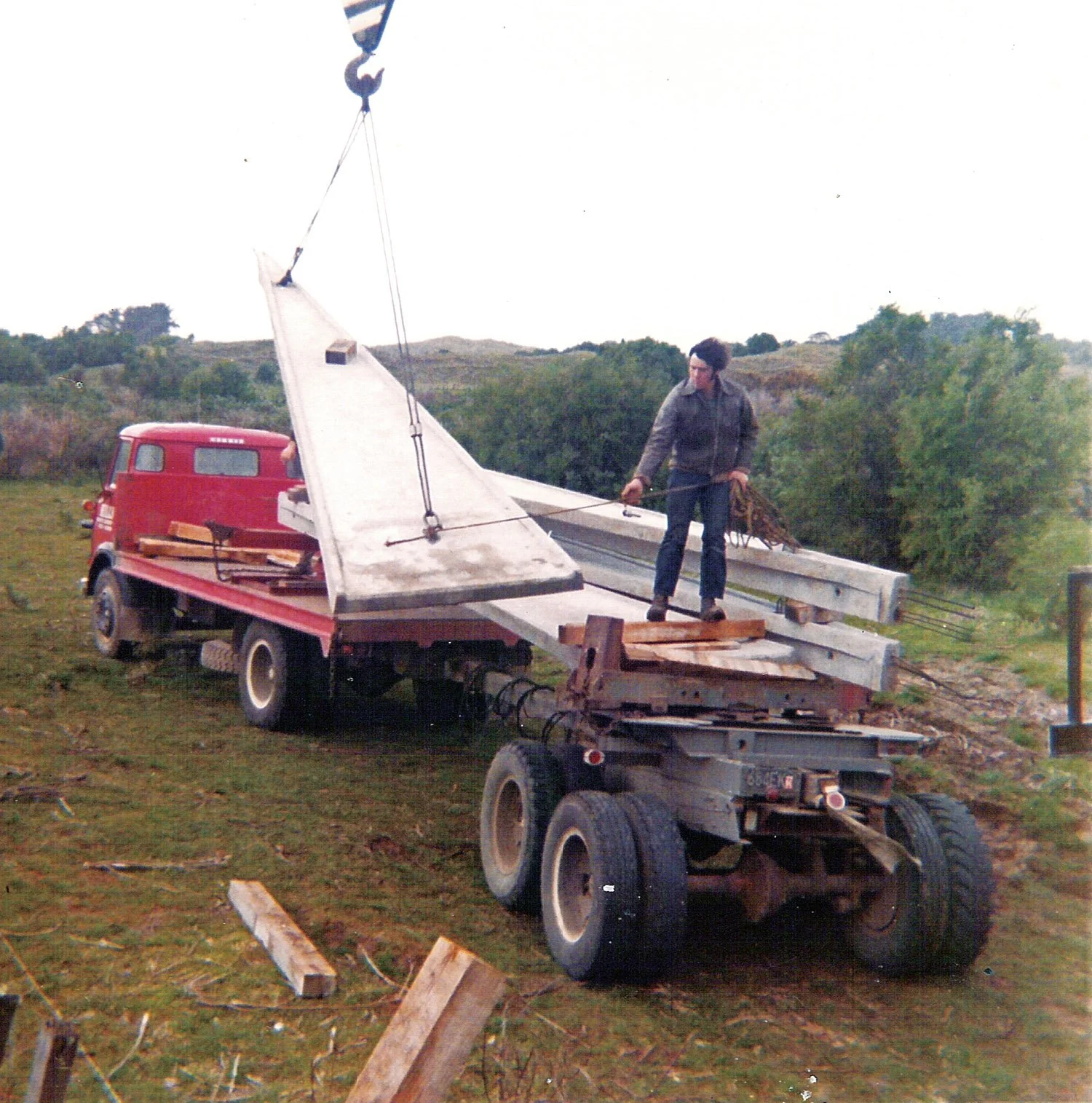
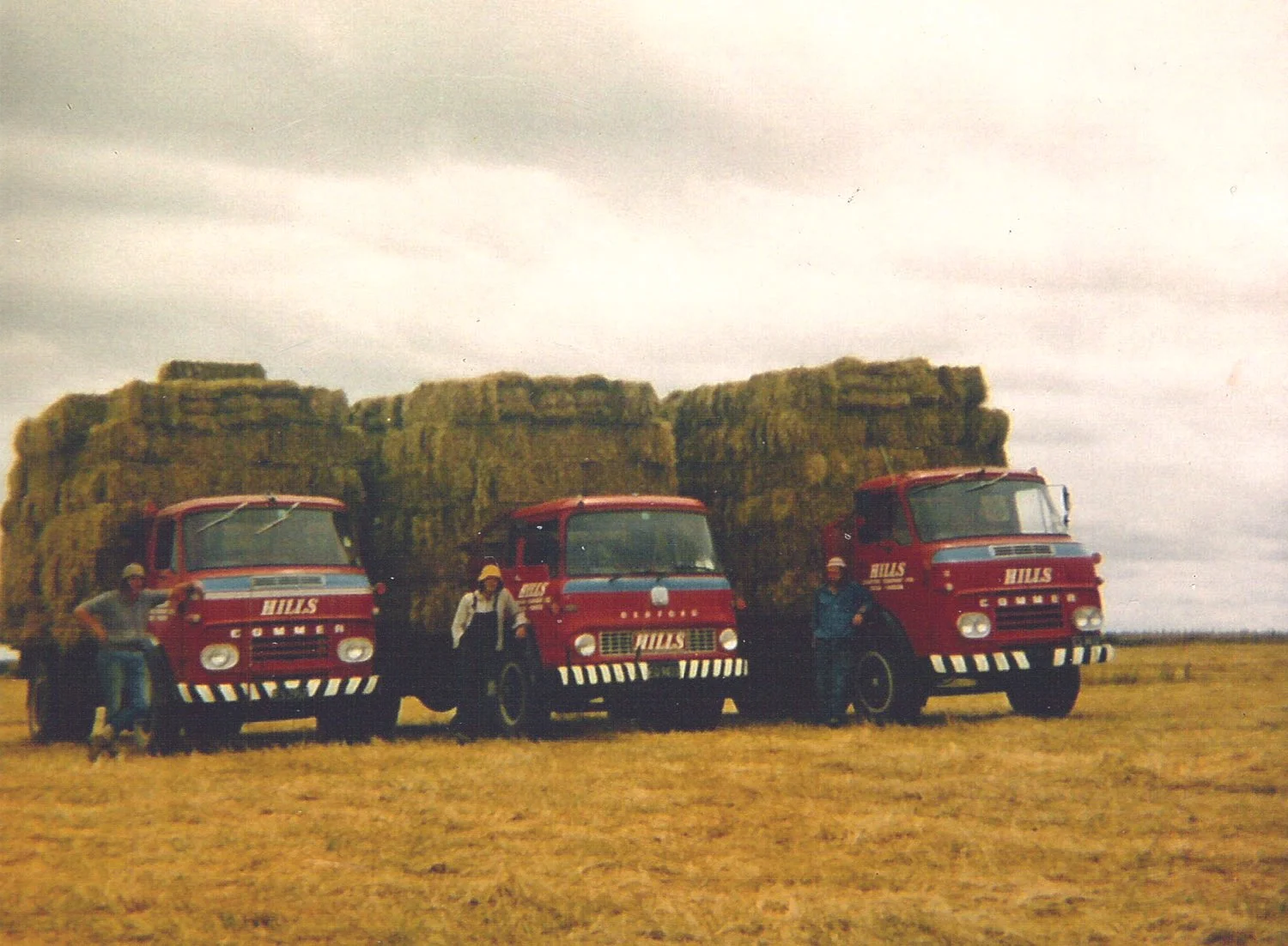
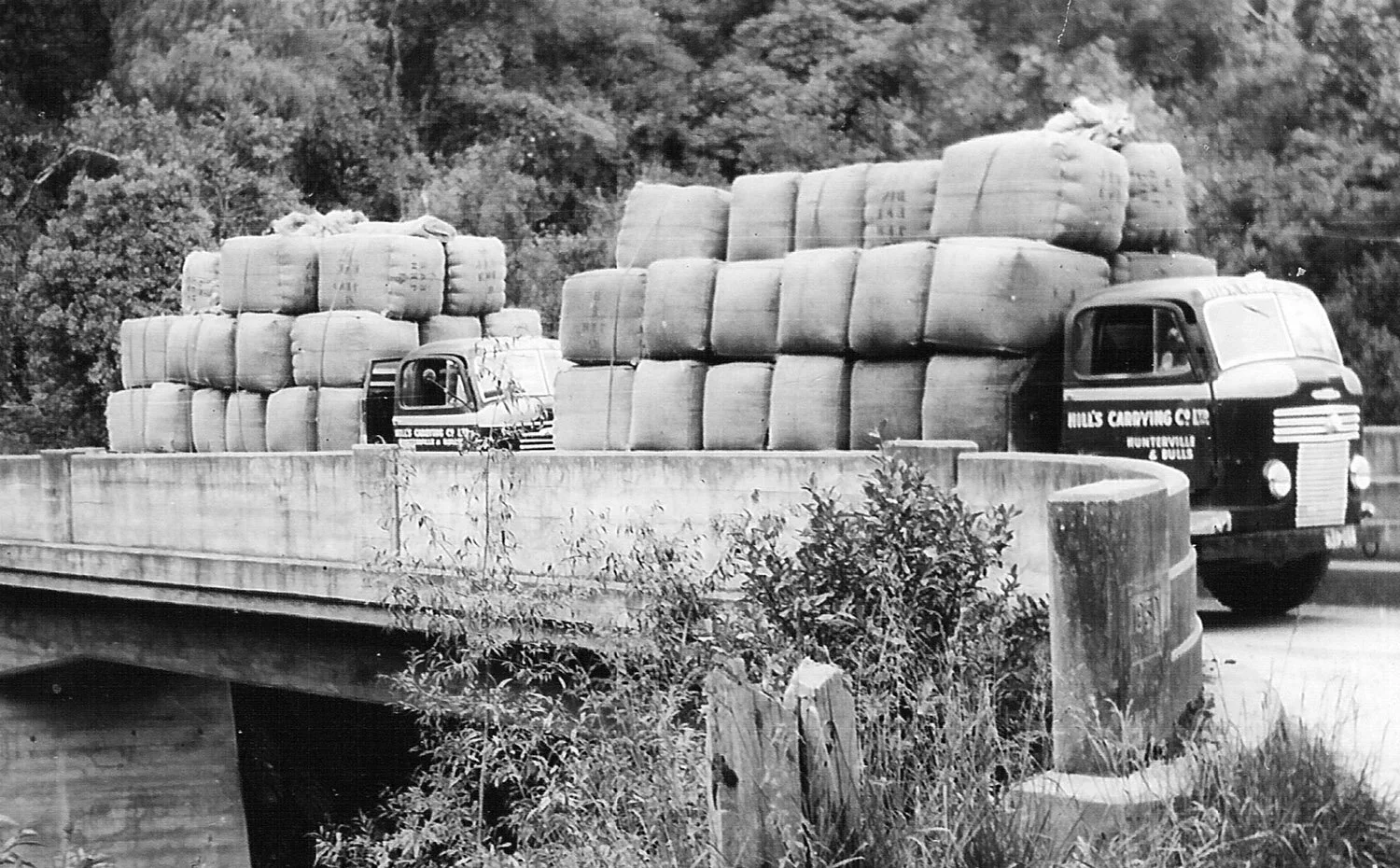



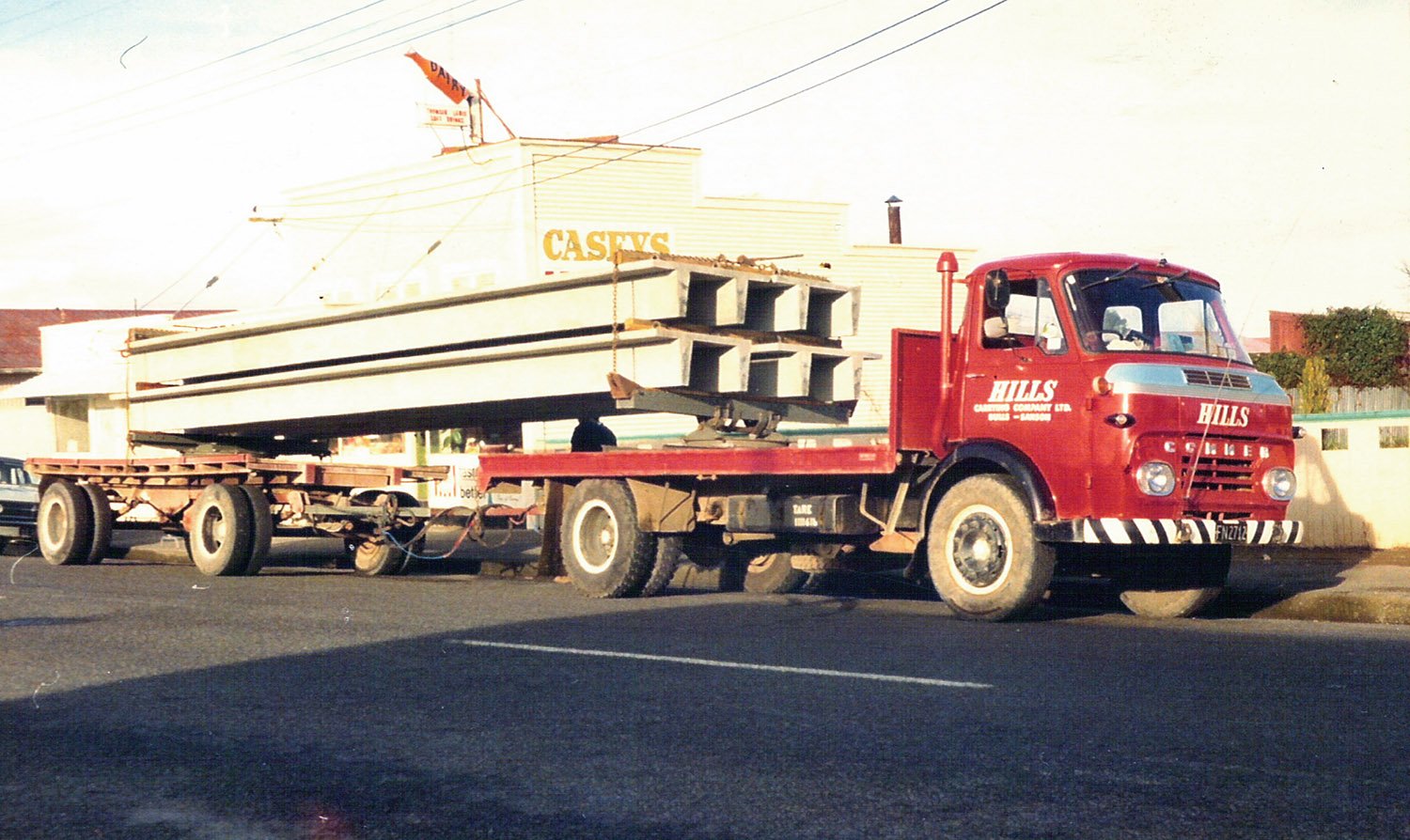
Although initial thoughts cast doubt on the suitability of this rig to operate in the harsh conditions of the Hunterville hill country the first trip was to cart sheep to the Feilding sale and included the run up the Paki-Rewa hill. There were no problems and no further thoughts that the rig was unsuitable to operate in Hunterville.
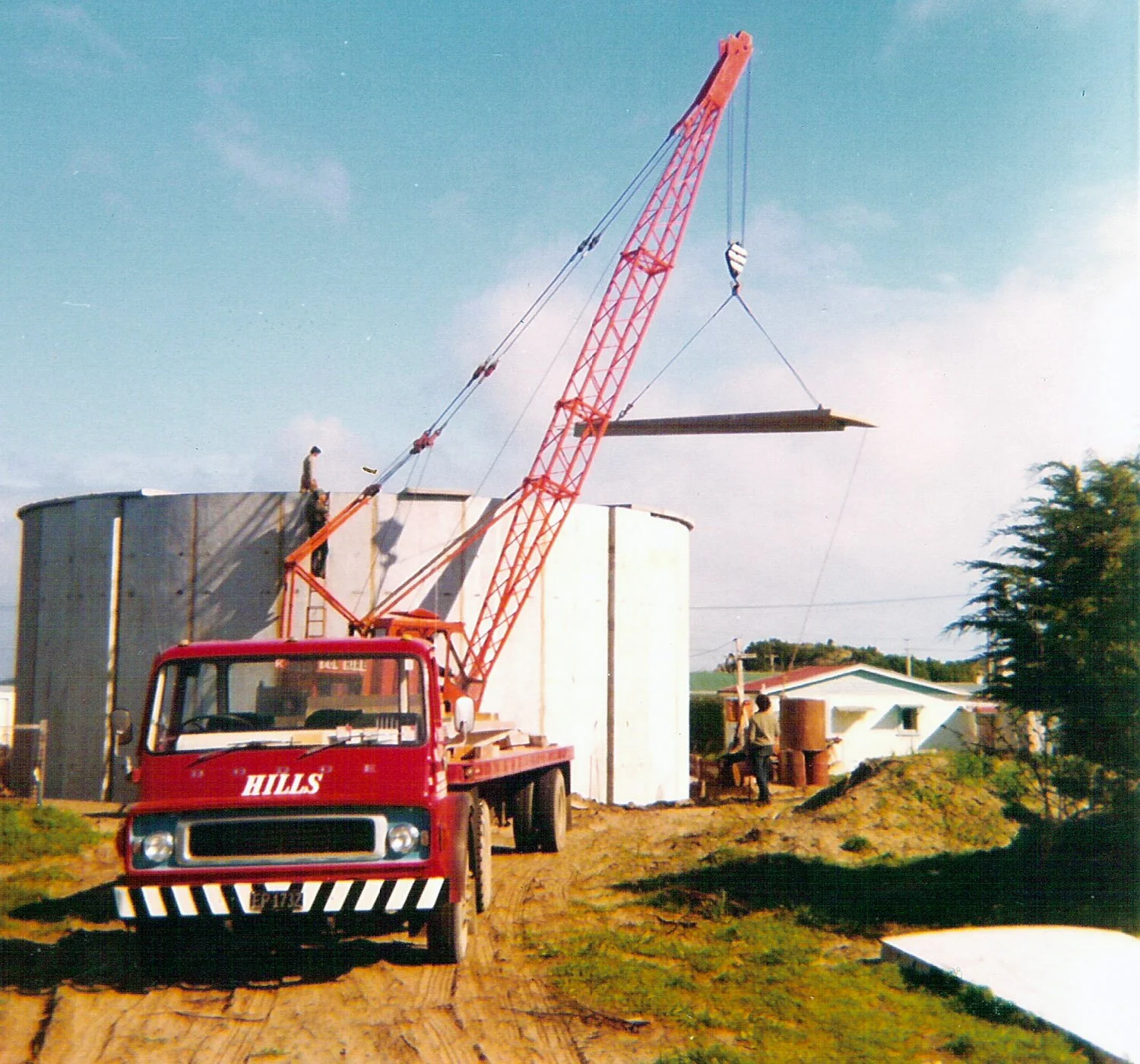
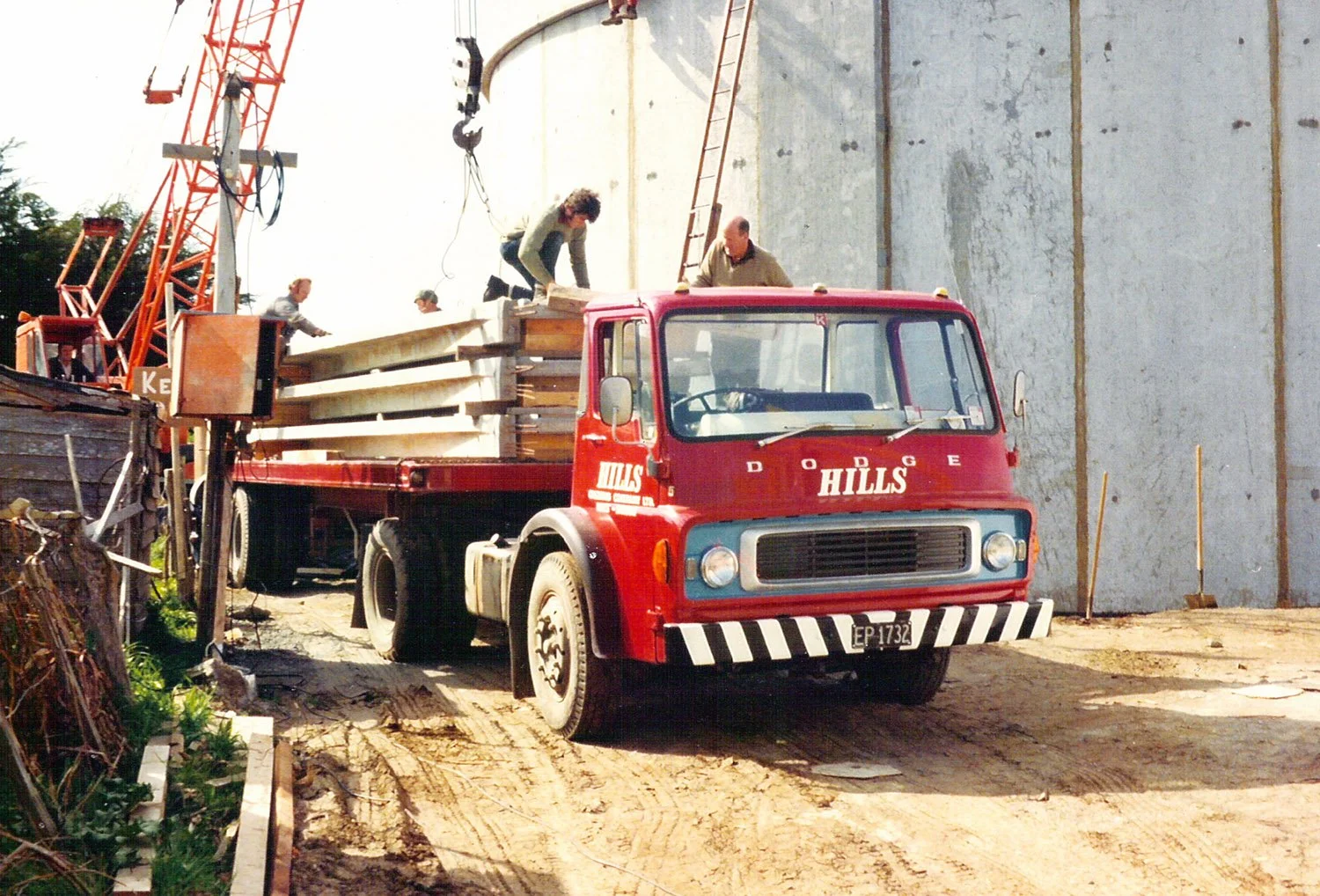
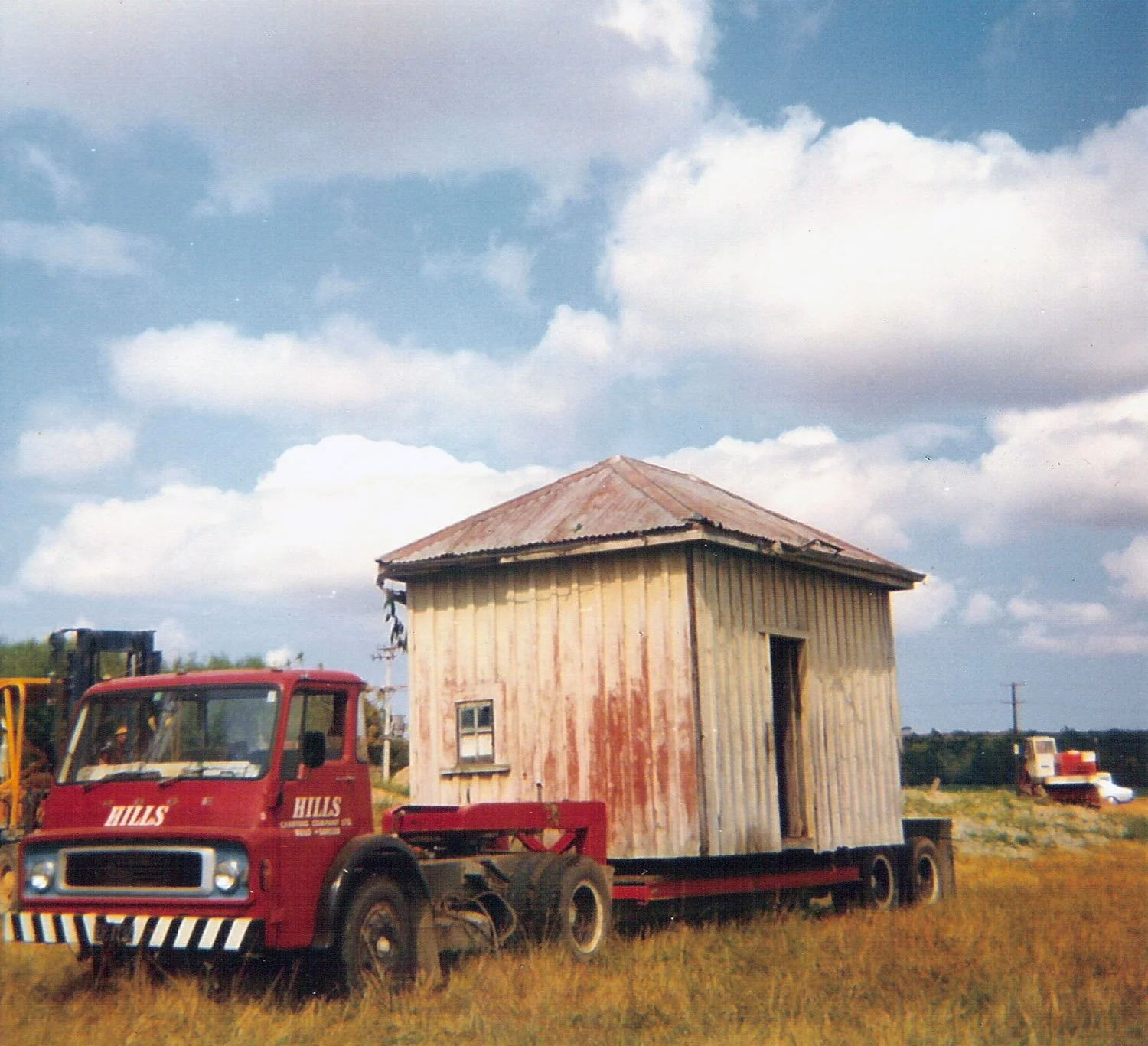

A Bedford bought with the Atlas fleet was soon replaced with a Dodge with a 185hp Perkins engine. A big improvement on the earlier lower horse powered vehicles and it quickly won approval from the driver.


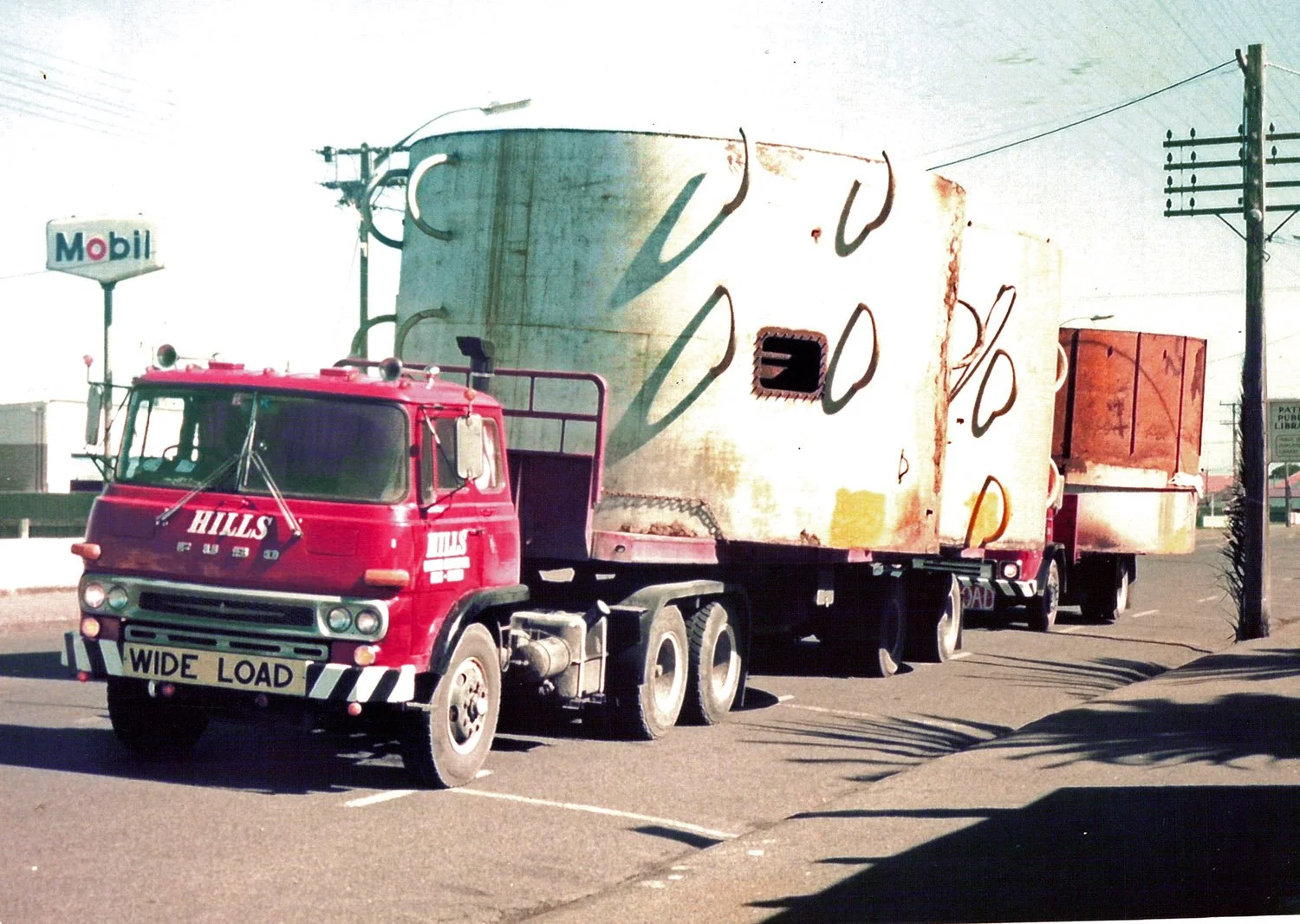
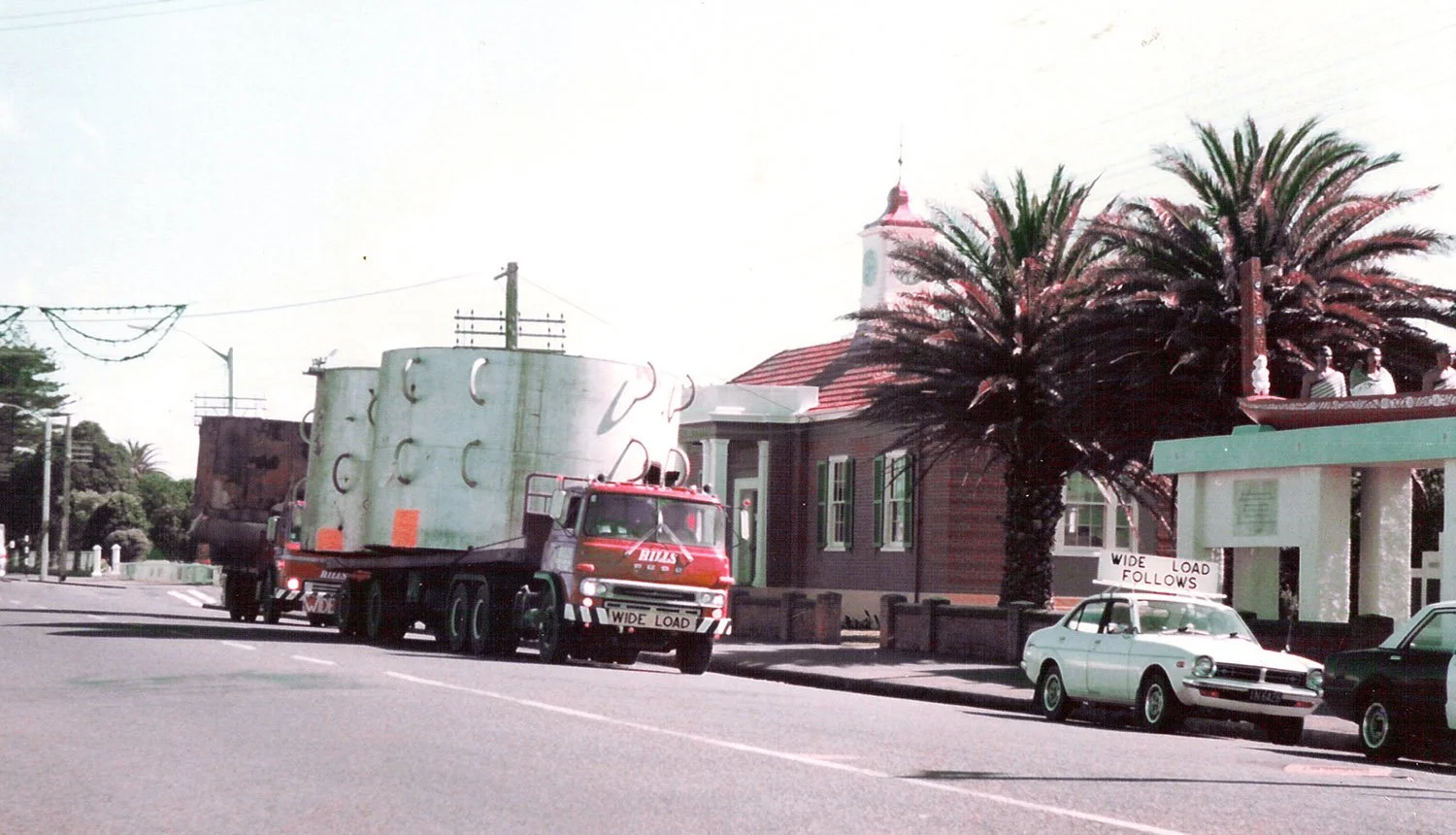
In due course this was replaced by the first of the tandem drive Fuso trucks and there quickly followed the first of the three deck stock crates on both truck and a 24ft three axle trailer, the first in the Rangitikei. They now had trucks that could cart 600 fat lambs per trip instead of 400, back in 1955 the biggest unit of truck and trailer could cart only 250.
Later Hills would purchase two Leader trucks from Jolly and Mills. The smaller had a Cat. V8 engine while the larger had the straight 6 Cat. And was for some time the main stock unit in the fleet, driven mainly by Bob Jarrett who is now an operator in his own right in Bulls.
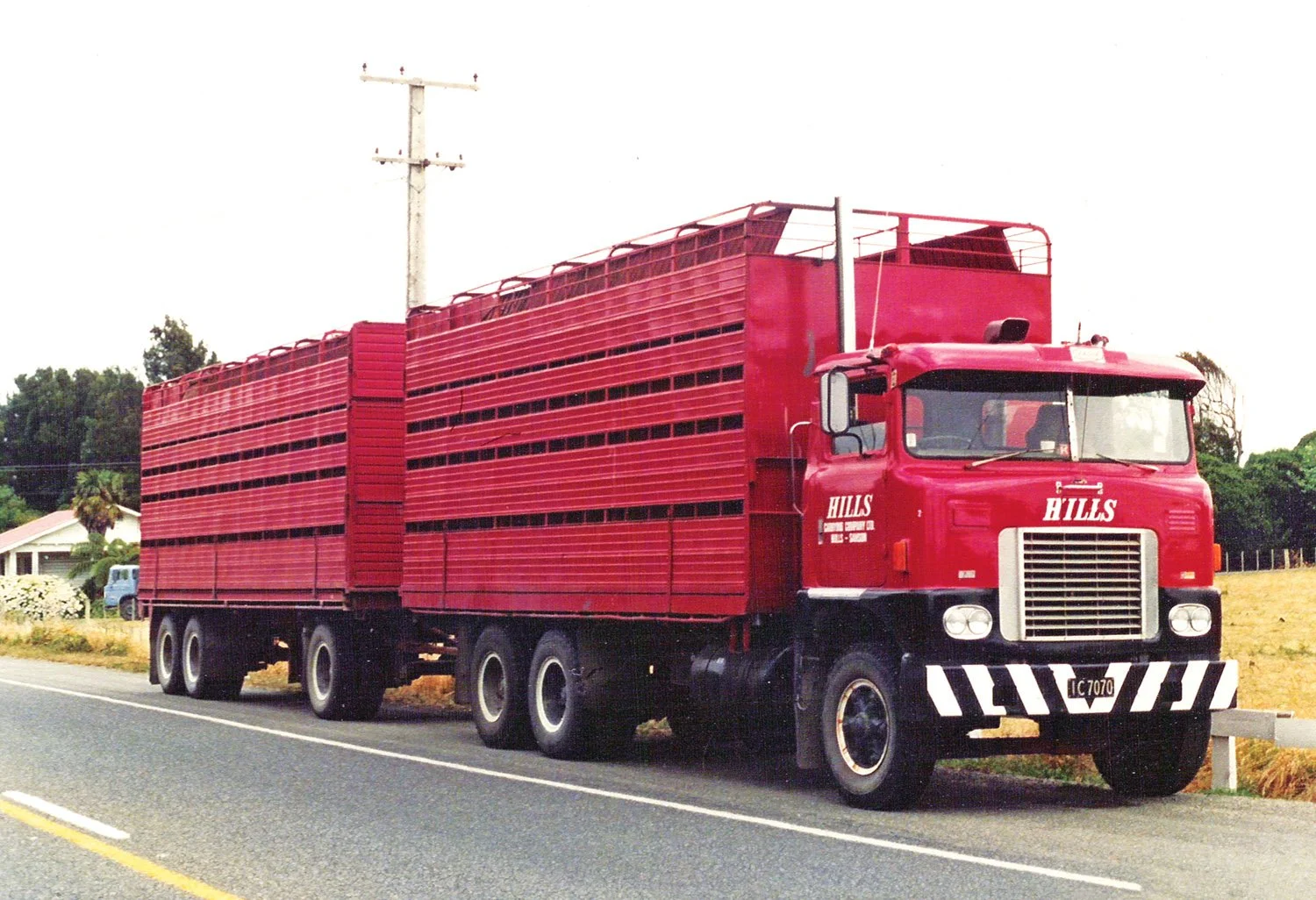

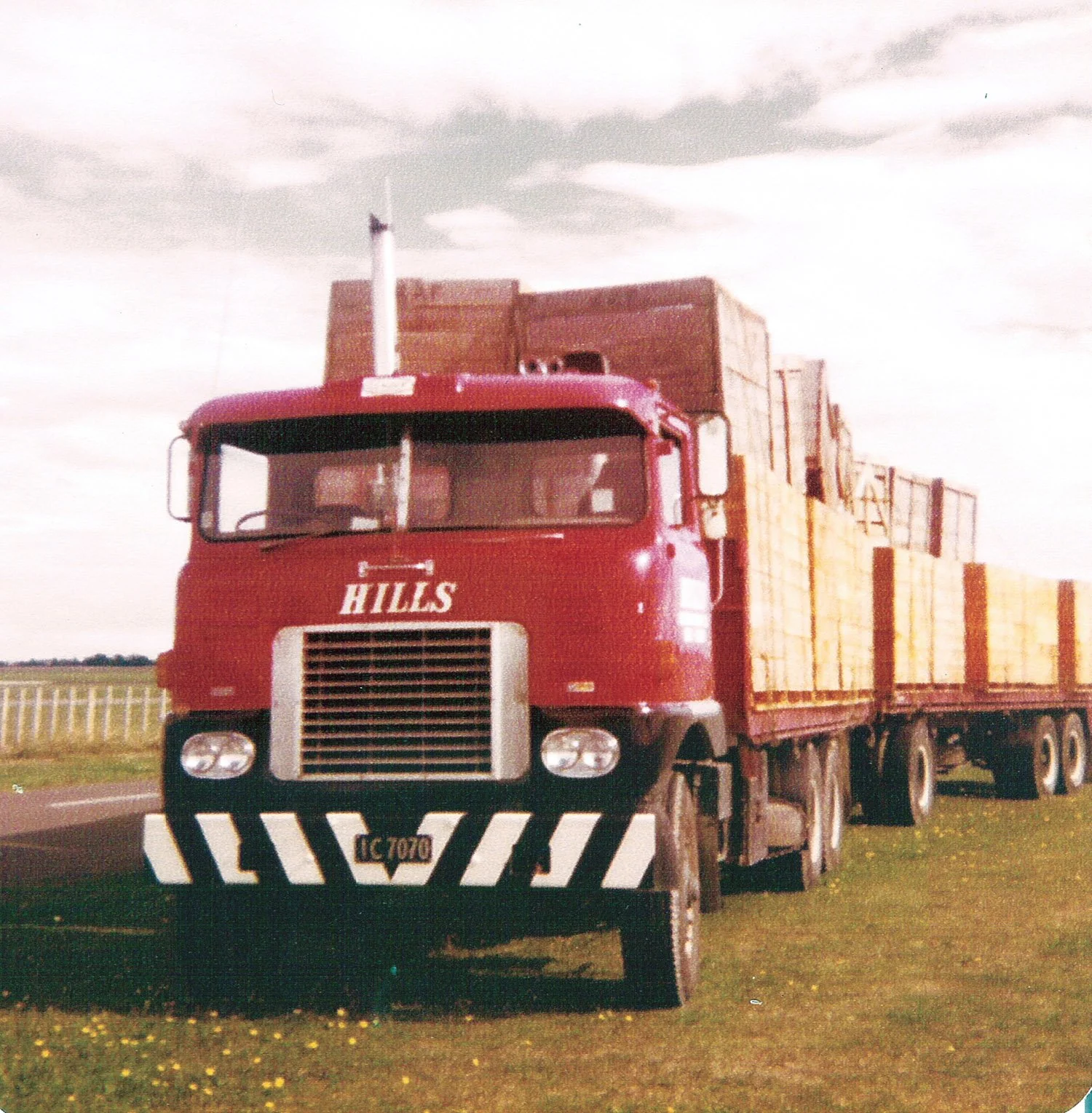
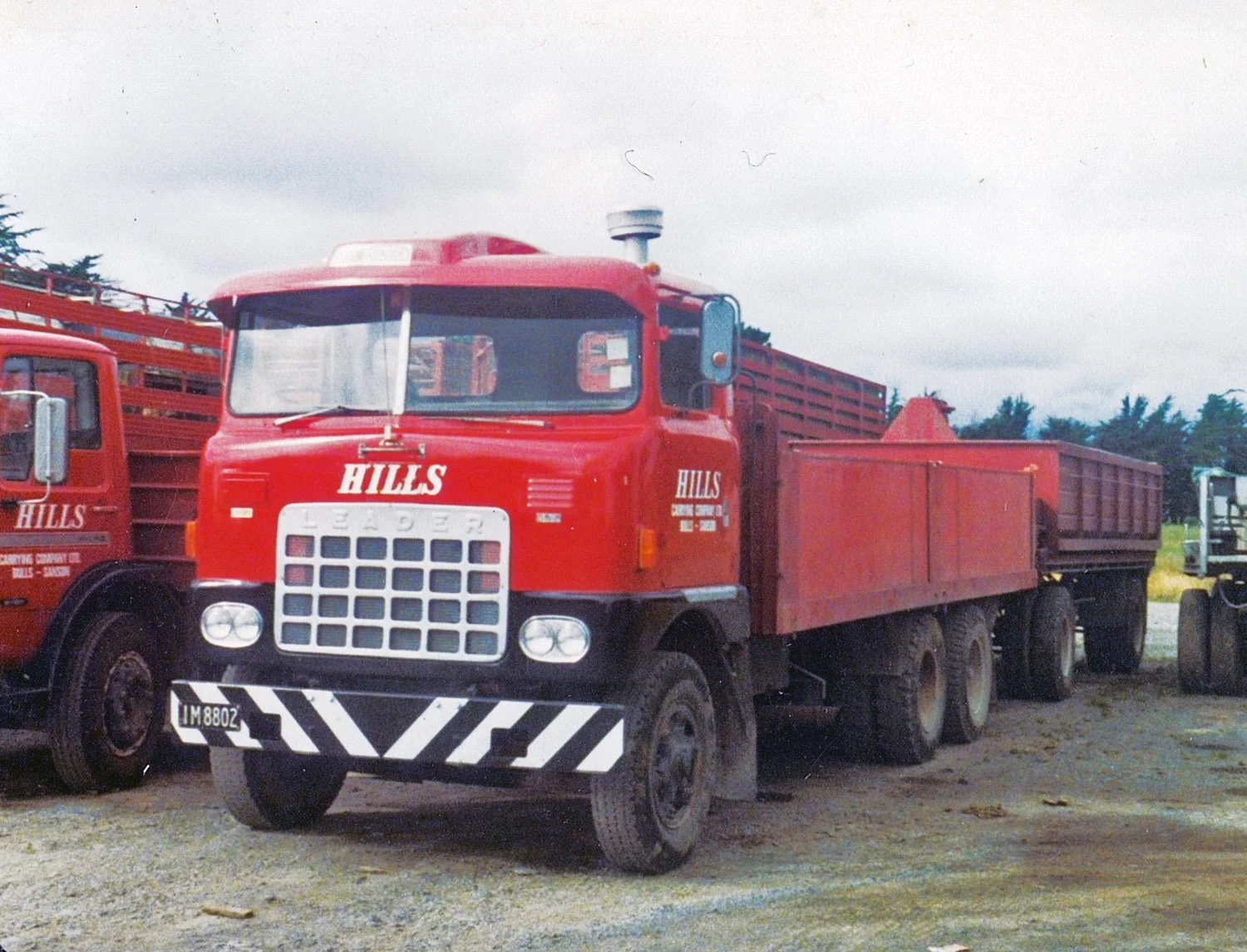

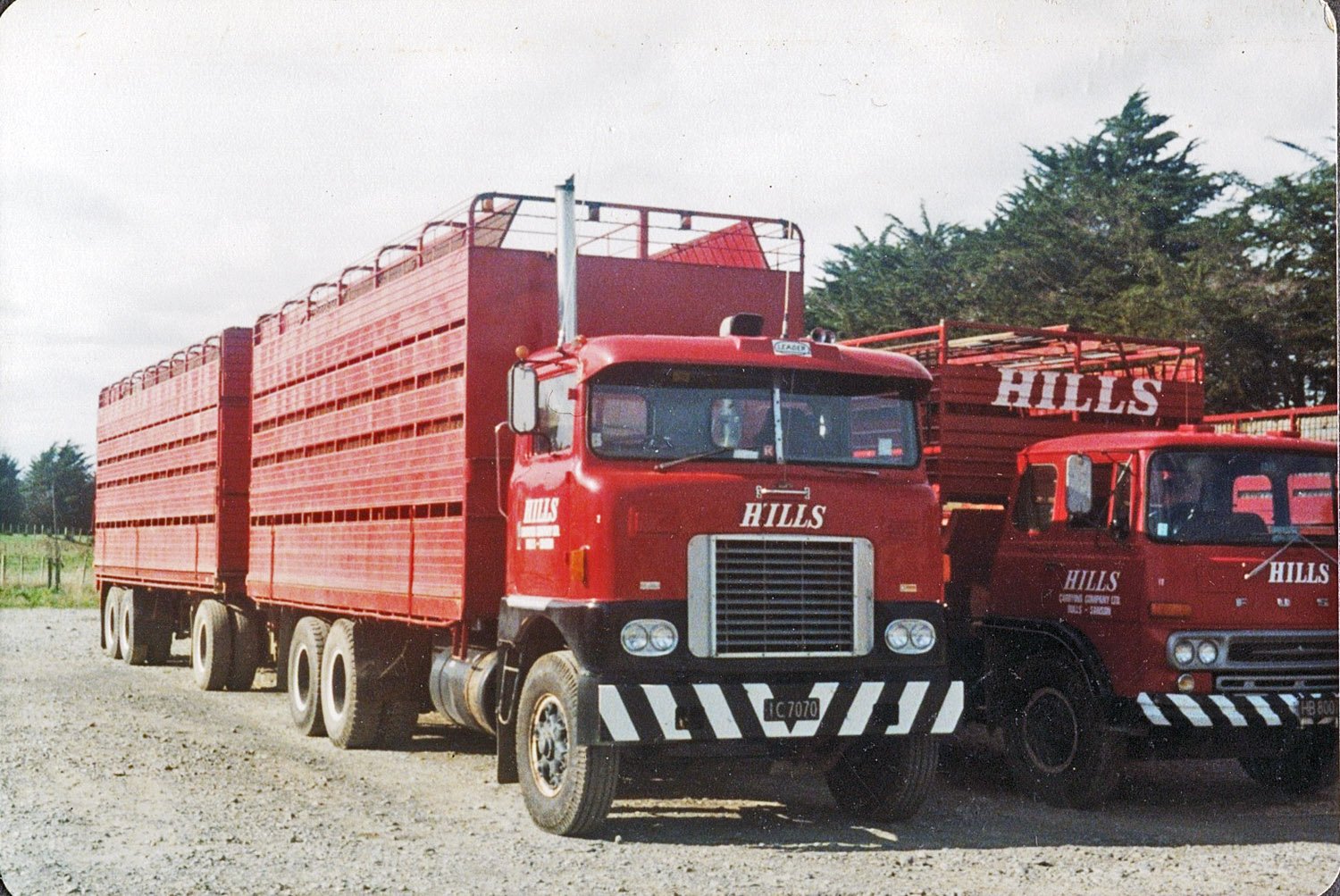
Of the very few vehicles bought from other than Jolly and Mills there was a Leyland Super Hippo bought from Motor Truck Distributors and later this was traded on a Dodge that had been repowered with the V8 Cat. engine.
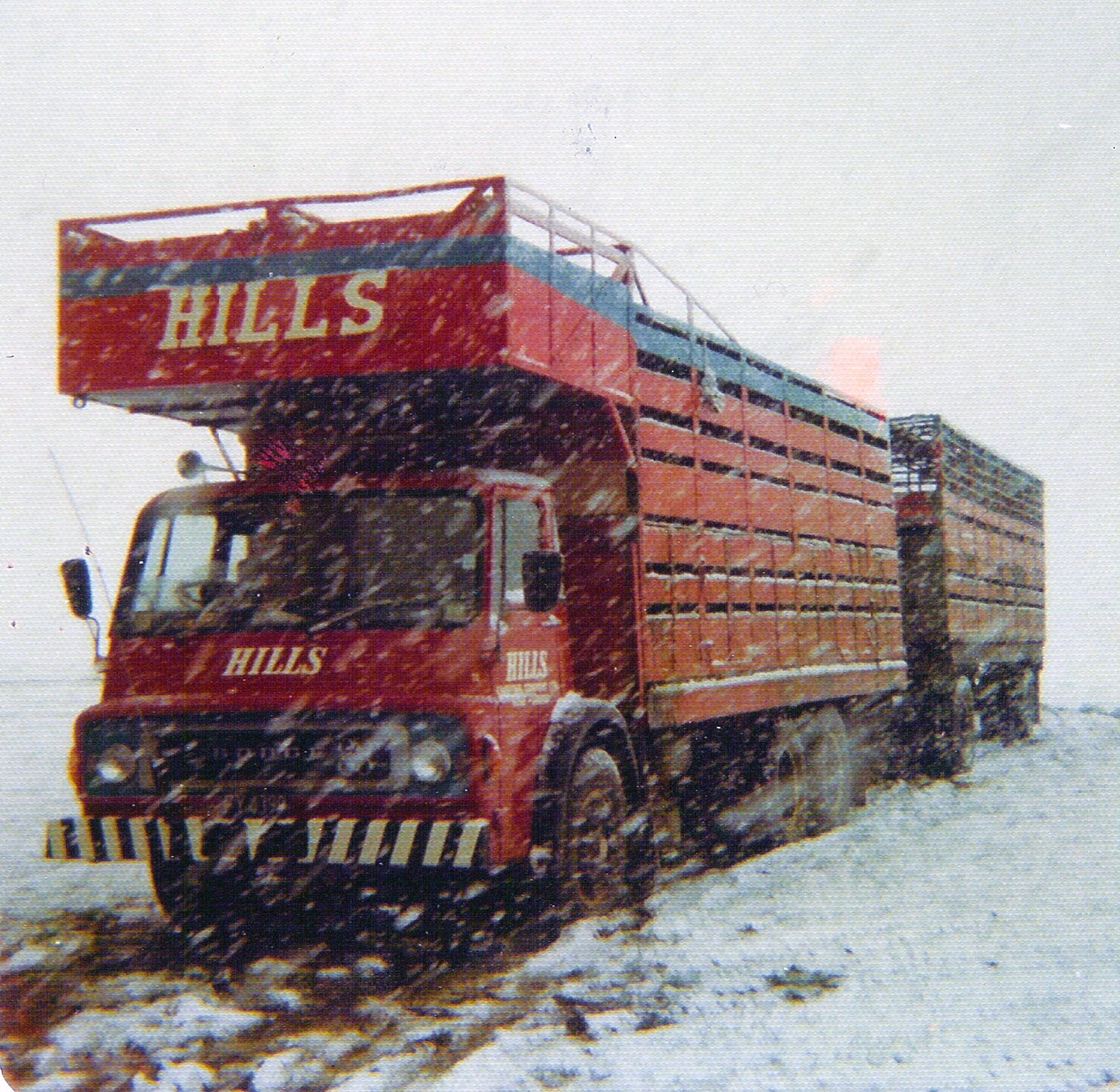
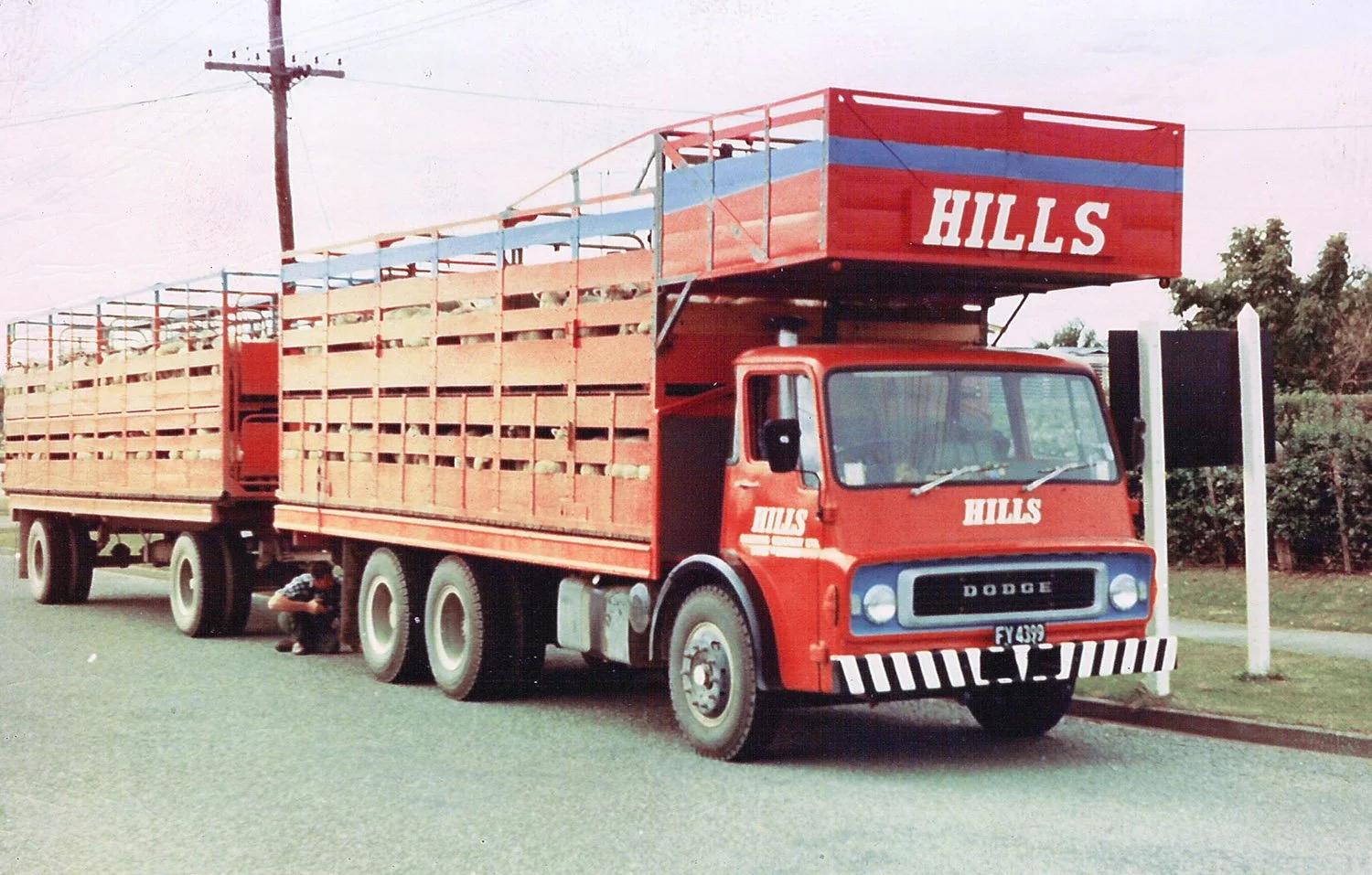
The firm could now cart fresh vegetables in competition with the rail and so they commenced cartage of potatoes and onions from Bowen Brothers and others into the Auckland markets and onto the Auckland wharf for export overseas. The Cat. powered Dodge was used extensively for this, and on the first run did the 300 mile trip from the Rangitikei to Auckland in ten hours. They thought this was great - how times have changed. Unfortunately although they could cart into Auckland and other destinations they still could not backload and this proved to be a real problem.
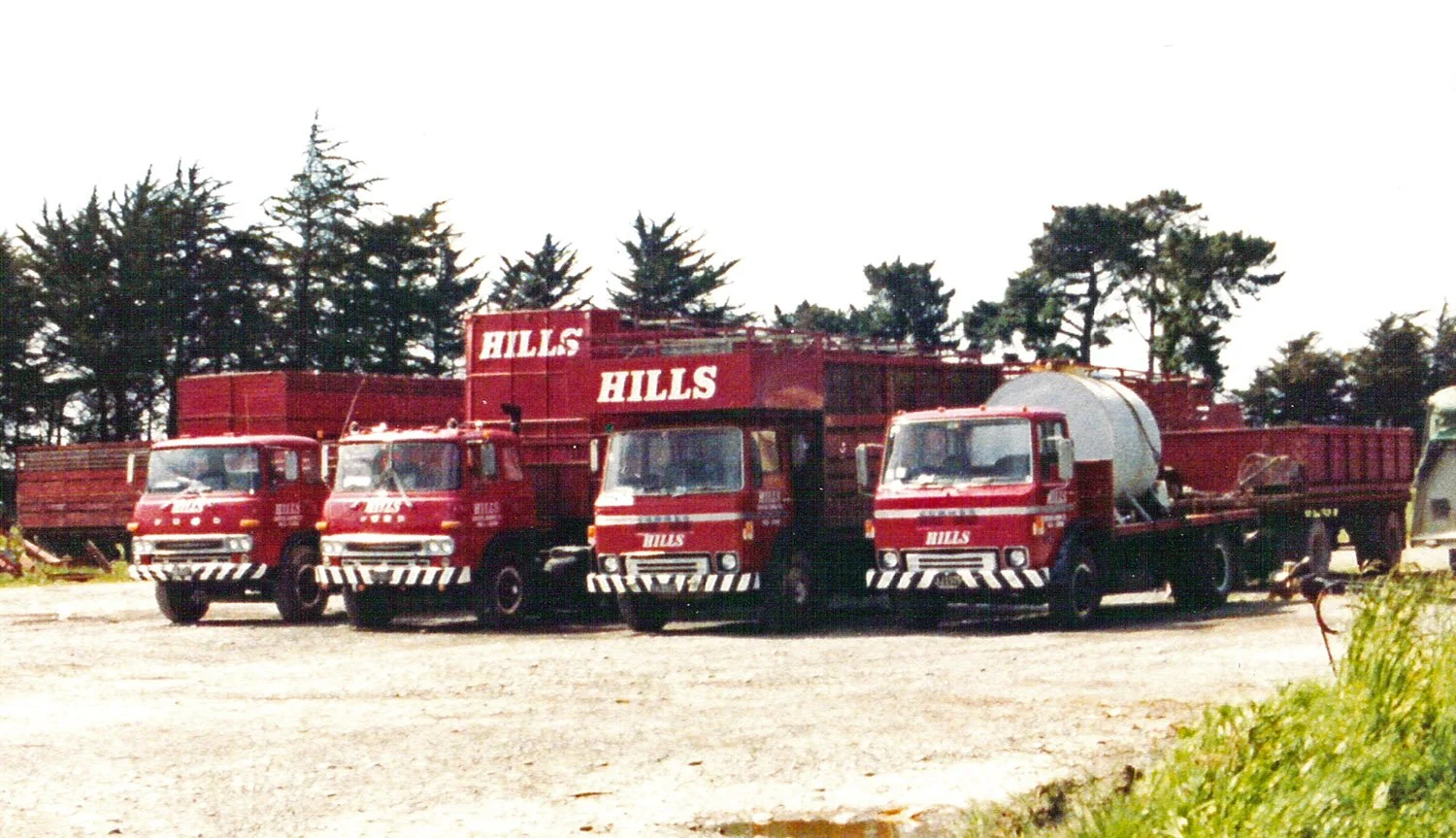
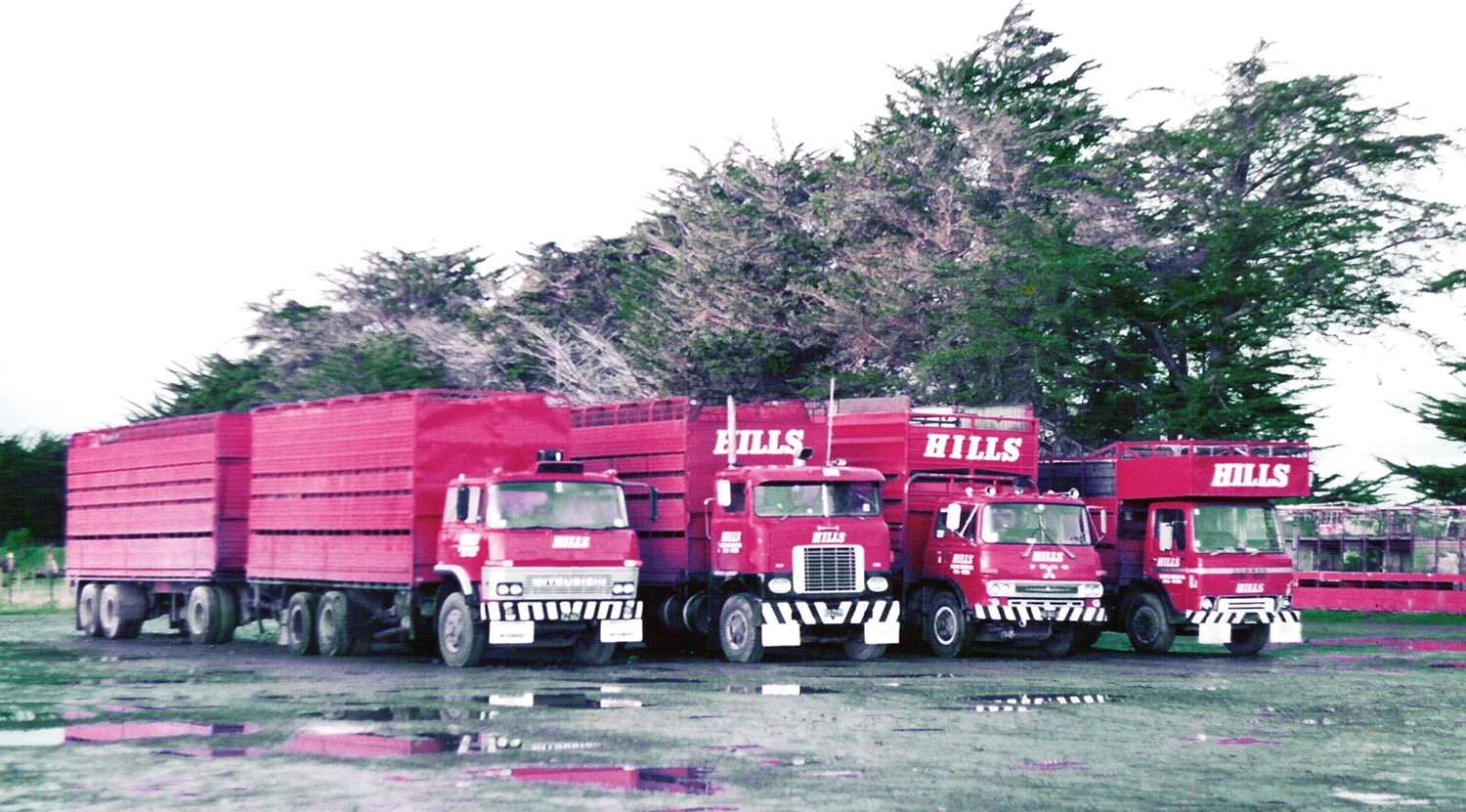
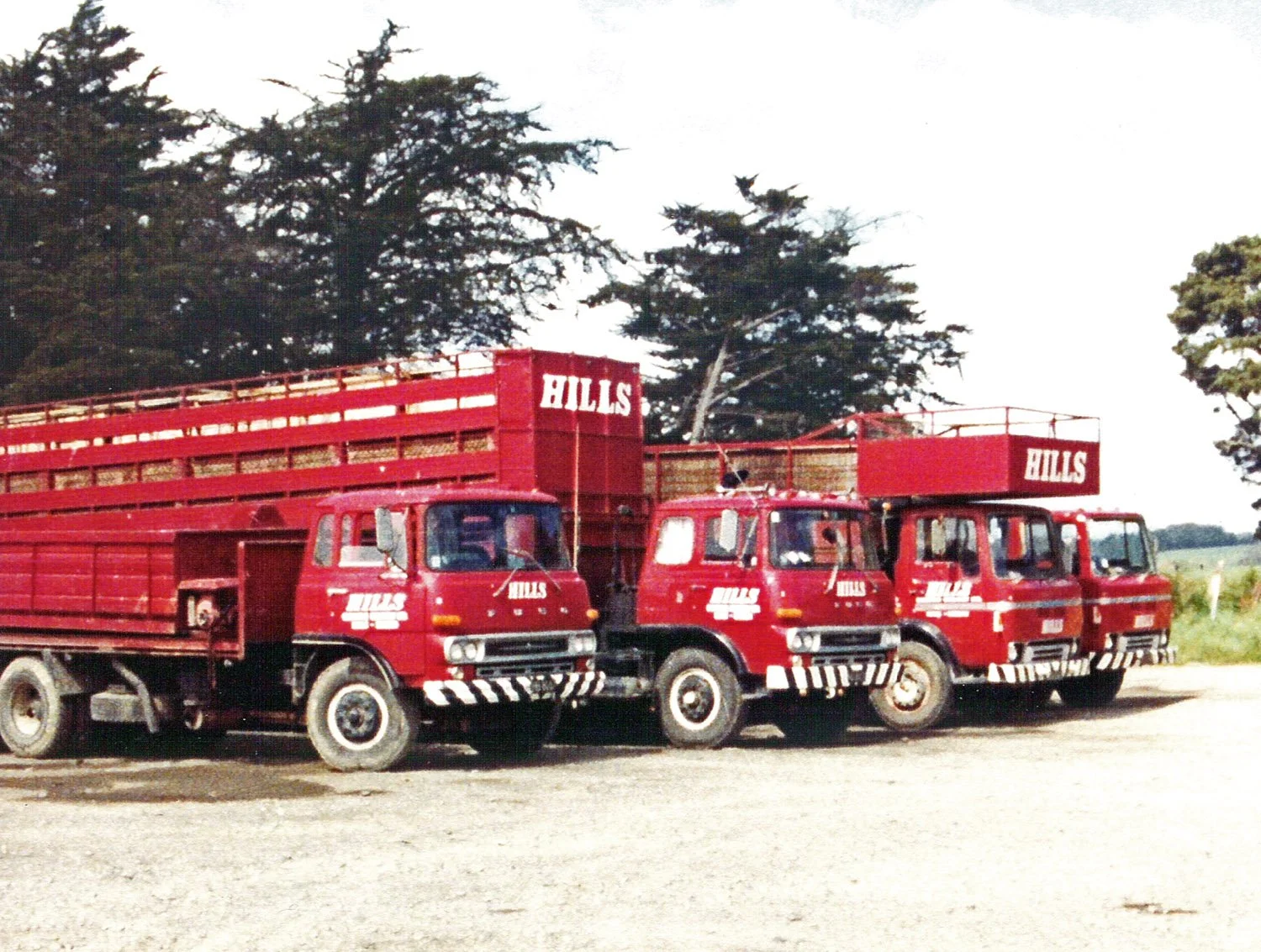


Records kept by Bob Hill showed that the firm had operated 2 Republic trucks, 2 Ford TT trucks, 1 Victa, 2 Dodges, 3 Whites, 2 Chevrolets, 1 Relay, 2 Denbys, 1 Fargo, 1 Stewart, 4 Bedfords and 1 Federal all before 1936
After that date the fleet had included 1 Leyland Cub, 1 Leyland Super Hippo, 1 Morris Commercial, 1 Mack, 1 International, 1 Vanguard, 4 Dodges, 12 Bedfords and 25 Commers up to about 1961 and after that date the fleet consisted mainly of Commer and Mitsubishi trucks and the two Leaders.
In 1967 it was fitting that the company mark their fiftieth anniversary and while organising a celebration for staff past and present someone started looking over the facts and figures.
In the nine years from 1947 to 1955 Hills Carrying Company supplied the transport to shift a total of two million, seventy five thousand, three hundred and forty seven head of stock, made up as follows :-
2,022,040 sheep, of which
1,131,440 were fat sheep and
890,600 were store and other sheep.
38,235 head of cattle
14,510 pigs and
562 horses
They also shifted 66,310 bales of wool, over 11 thousand tons of potatoes and over 162,495 tons of sundry other goods. In doing so the fleet covered a total of 1,678,510 miles, (2,517,765km).
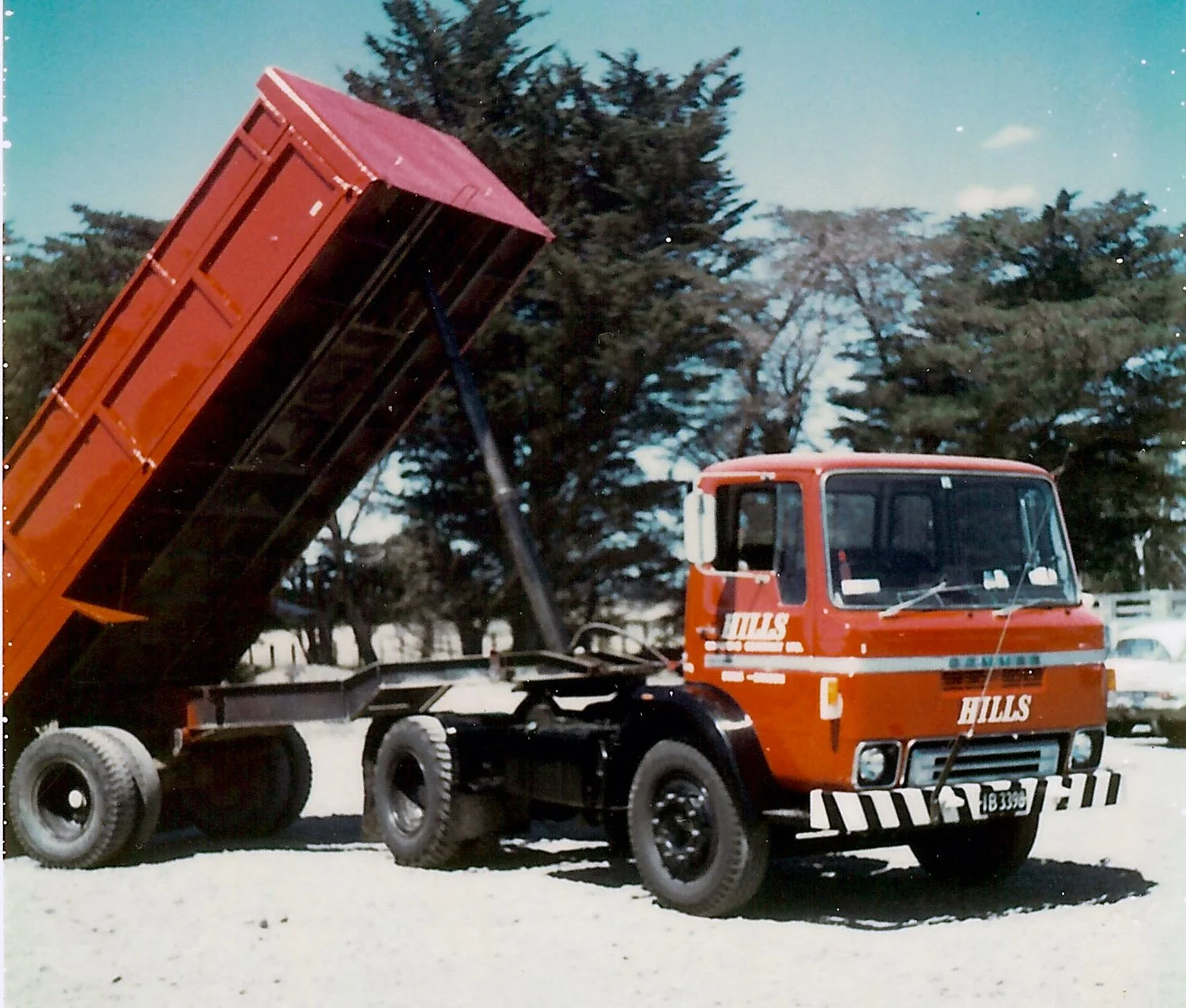

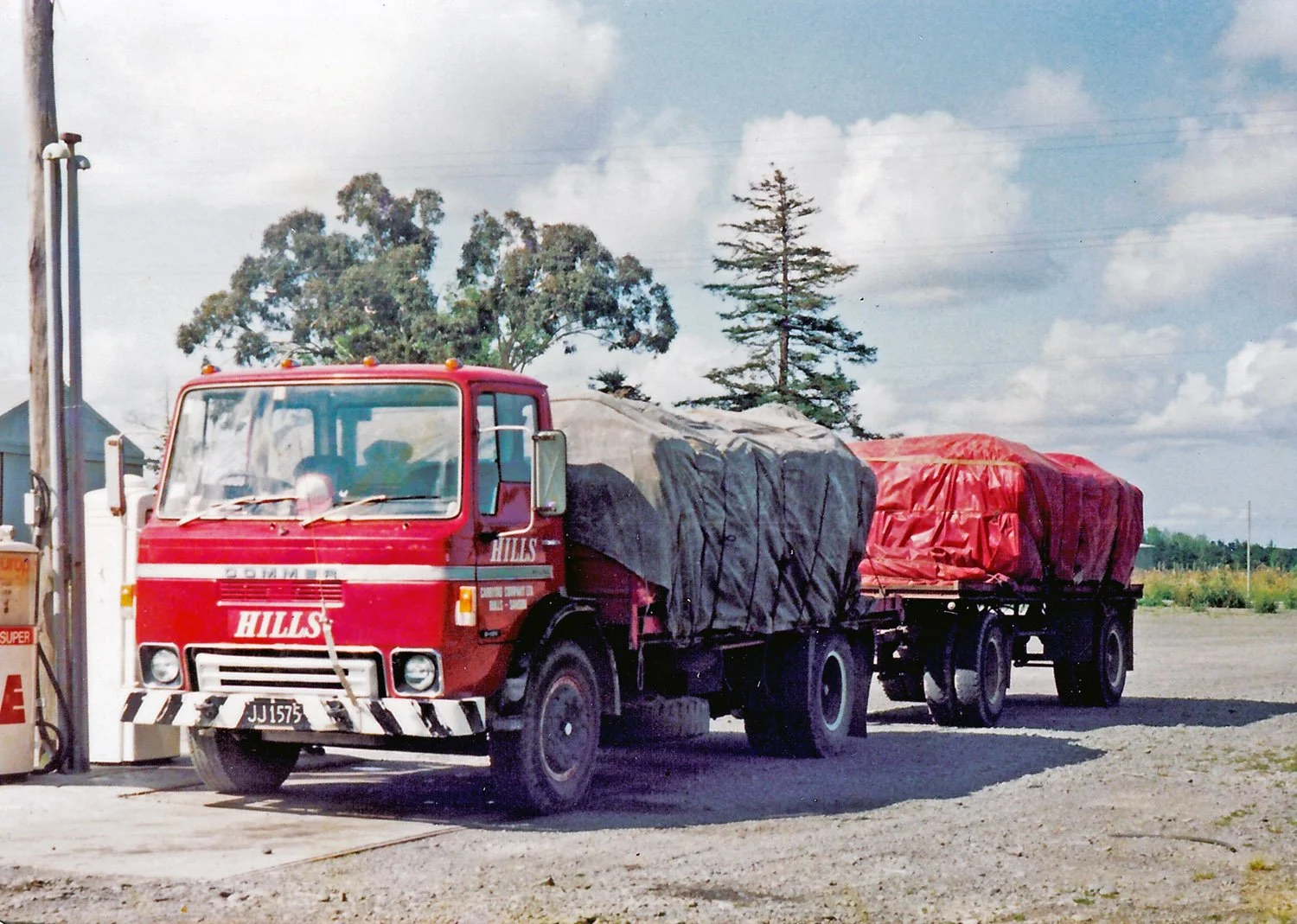

In the late 1960s the Hunterville branch of Hills Carrying Company was joined in the merger that created Mid Island Transport Ltd. and at the Hunterville yard it was business as usual under a new name.

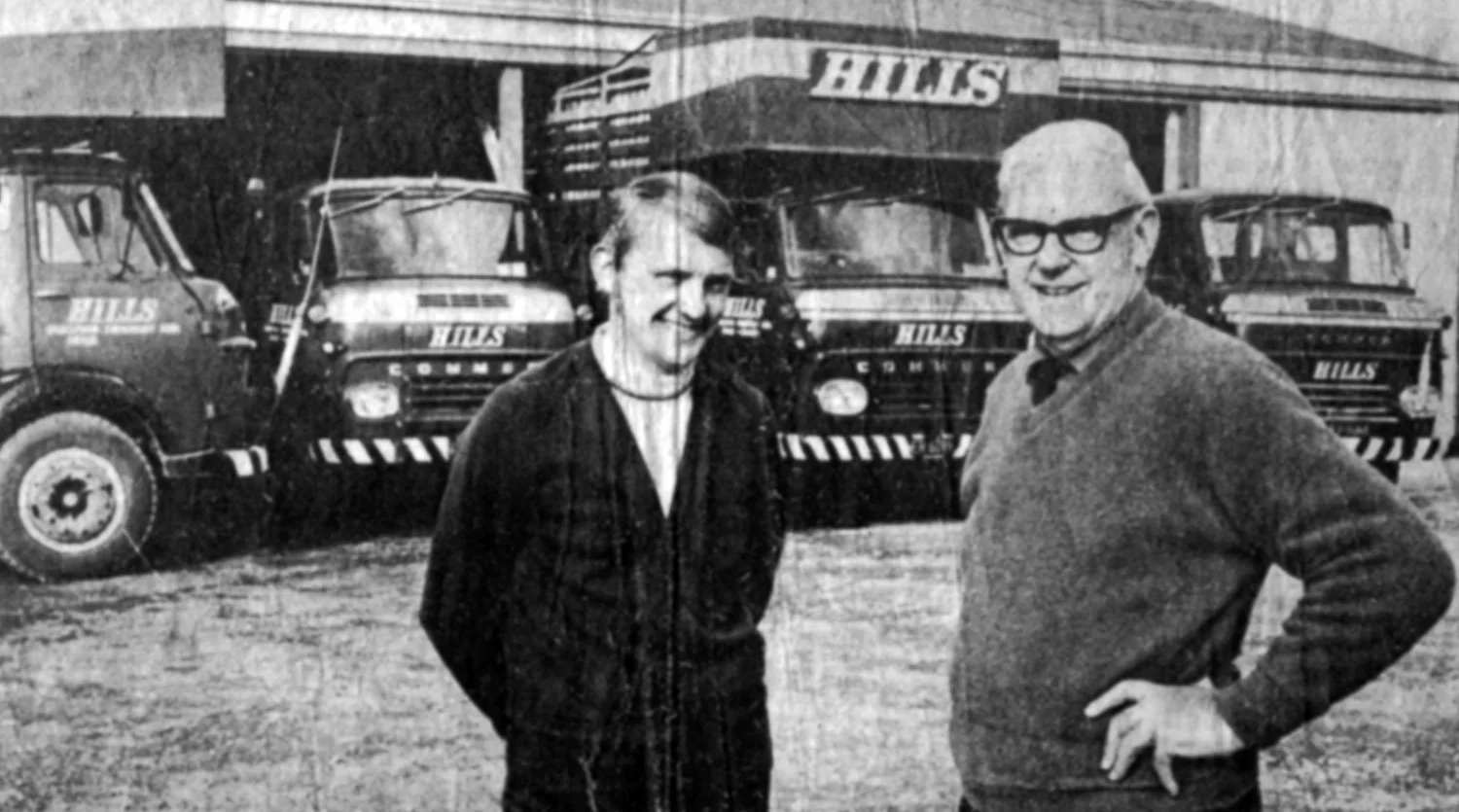
The Bulls’ branch of the company would continue and expand with the purchase of the local branch of Atlas Freighters and from the new depot at Watson Street, and with Noel’s two sons, Michael and Steven, on the payroll it continued to be a major transport company throughout the Rangitikei district and beyond. However it was realised that with the changing transport licensing the medium size rural transport operator was at risk. Whilst the small operator with a personal contact with his farmer clients would always have a place, opening up the industry to competition would allow the larger operators to move in and so it was that in 1983 the business was sold to Child Freighters bringing to an end the story of a family enterprise that had been in Bulls for sixty six years.
Photos: Noel Hill, Trevor and Gloria Downs, Jock ‘Jack’ Devlin, Bob Jarratt, Nicky Plane, The Bulls and District Museum, the Hunterville District Museum, Marty Greaves, the late Stu Barnes collection and Anthony Spelman.
